
1 90 INFLATION DEFLATES OZ 72 NRI SUPERCHARGE INDIA MARKET 70 JAKARTA’S SOARING SATELLITE UNCERTAIN STEPPES IN MONGOLIA 100 ARCHETYPE’S EVOLUTIONARY ROAD 54 NISEKO SLALOMS BACK 82 USD10; SGD13; IDR135,000; MYR41; THB330 NO. 180 asiapropertyawards.com/newsroom






4


5
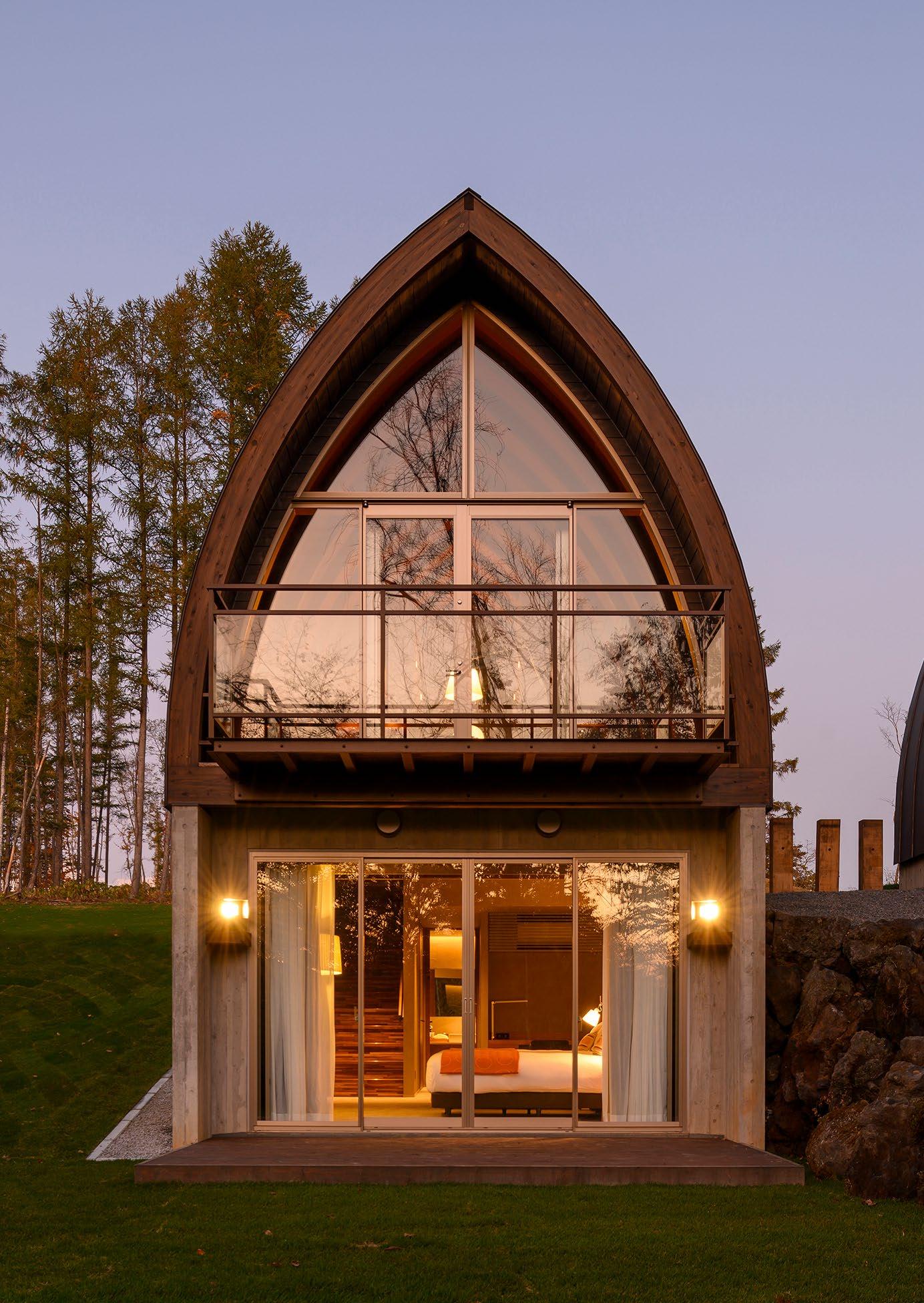
LUXURIOUS STAY IN NISEKO SURROUNDED BY THE NATURE

Andaru Collection Niseko is a luxury village living concept that blends modern Japanese and Balinese styles together. The villas are set against the magnificent backdrop of Mount Yotei and within the natural beauty of the renowned ski destination of Niseko, Hokkaido, Japan.
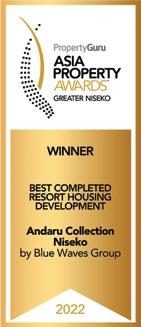


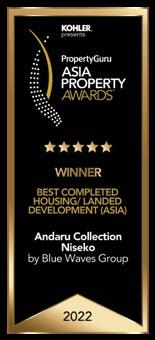

7
WWW.ANDARU.JP
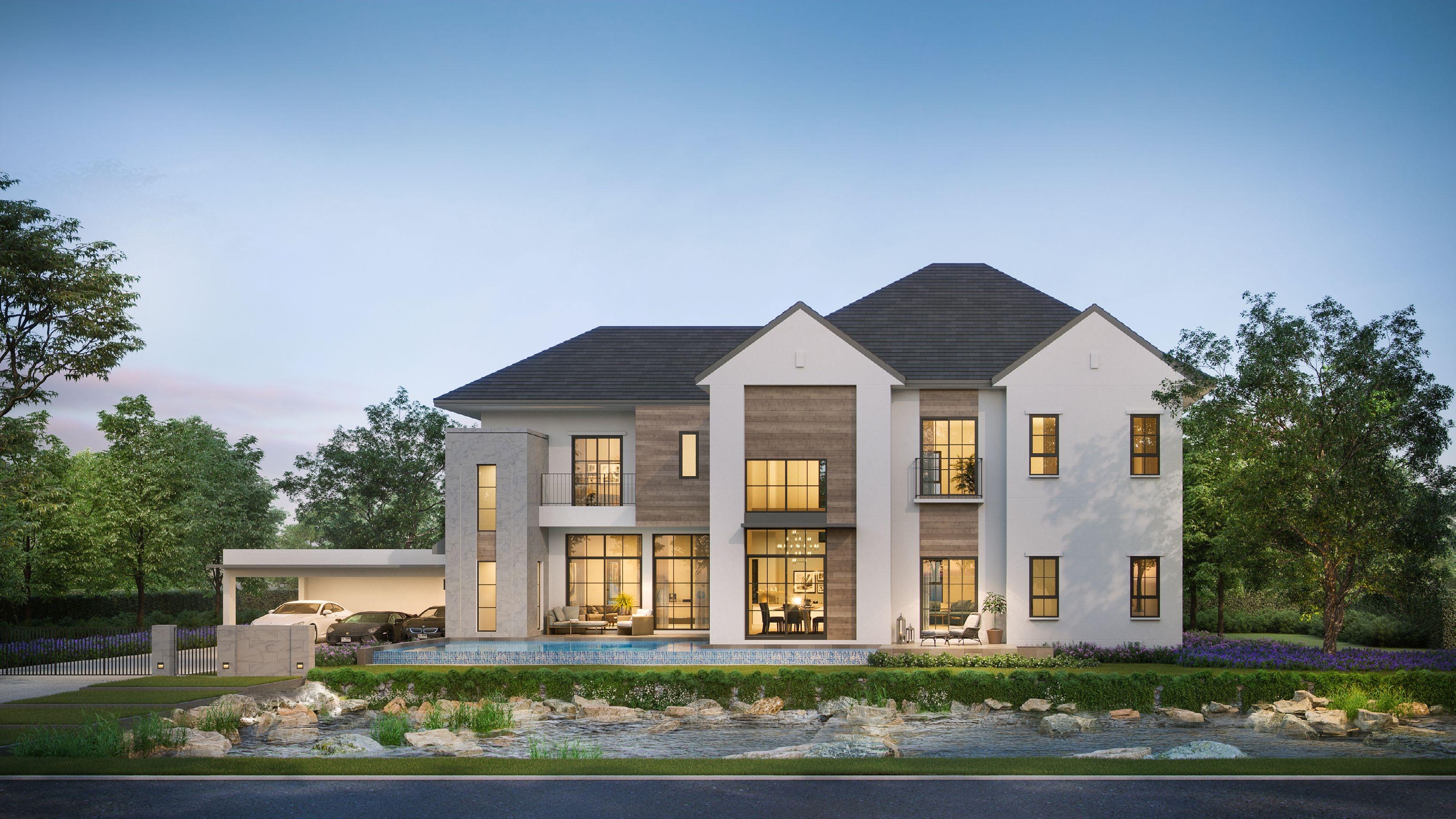
8

9




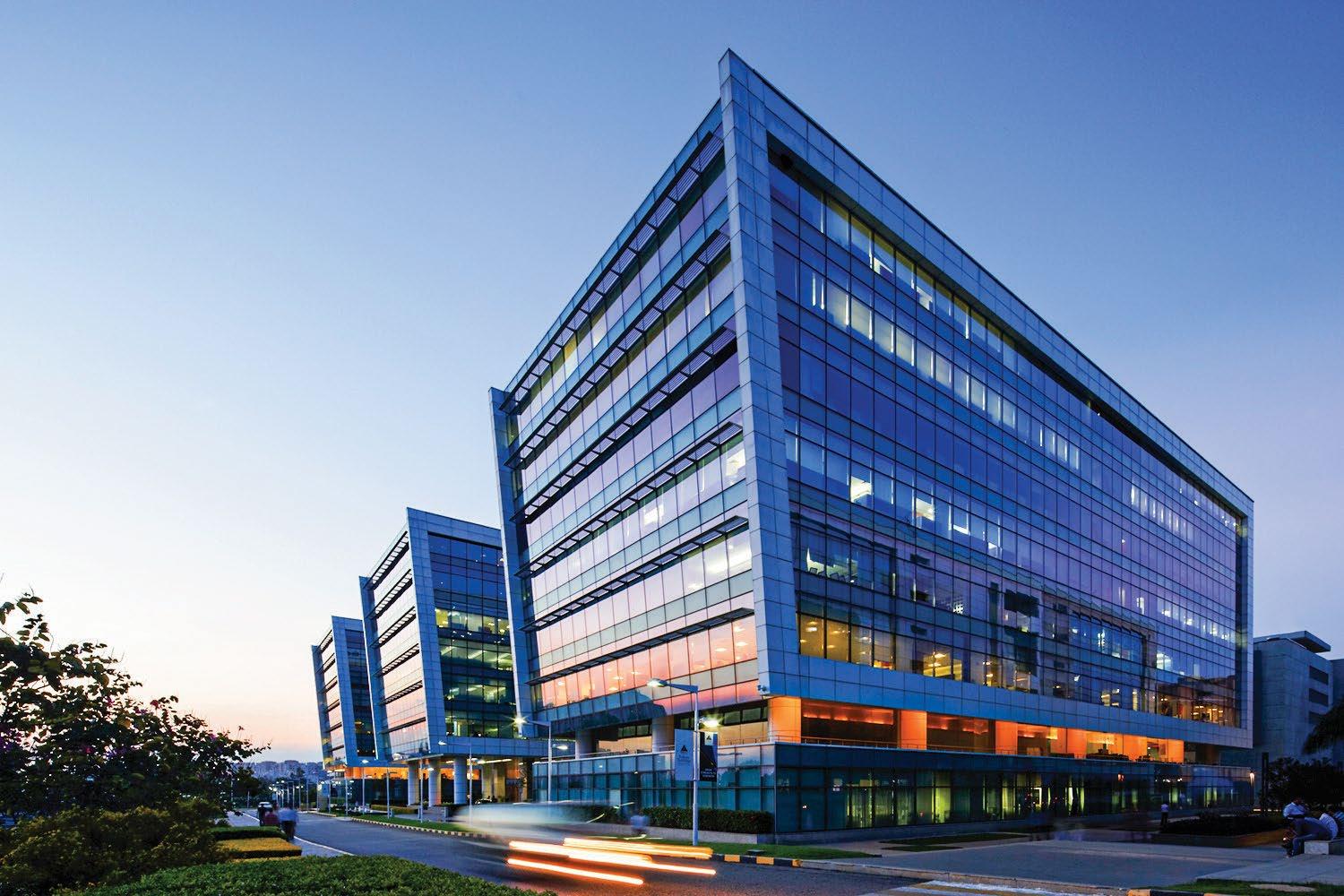
Solutions for distinguished lounges, games rooms, and activity centers in clubhouses, hotels, resorts, and private homes

Styles for Every Space
Architects, interior designers, hospitality operators, and home owners choose the heirloom quality and design of Brunswick and American Heritage activity rooms, games rooms, and furniture solutions.
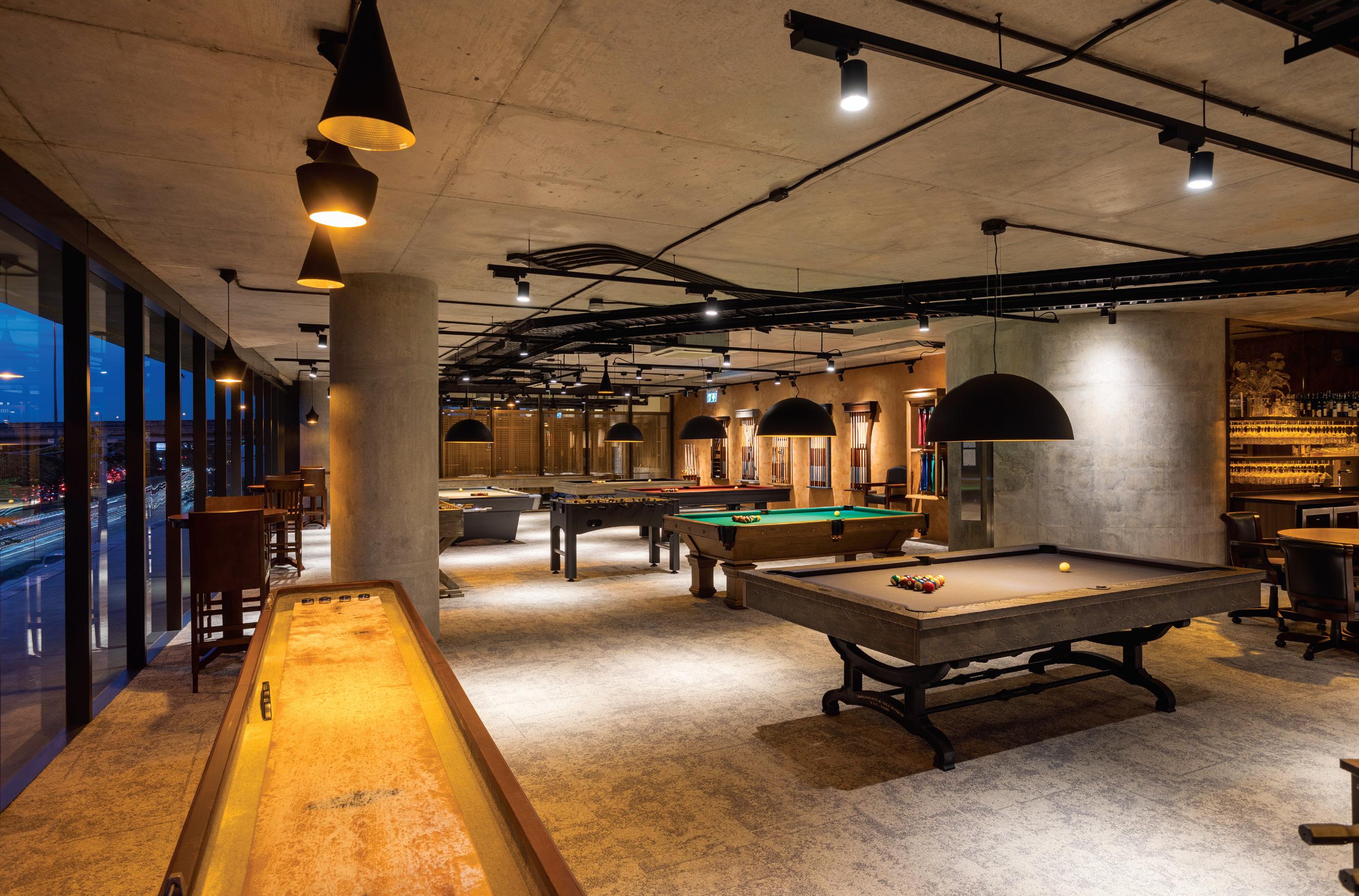
Heirloom Quality From Brunswick Billiards Group





PRESTIGE HERITAGE DURABILITY





QUALITY CLASSIC STYLING CRAFTSMANSHIP Tel: +66 (0) 2185 1920-4






Join the region’s most exclusive real estate honours, celebrating 18 years of excellence in 2023 AsiaPropertyAwards.com SHINE BRIGHT LIKE A WINNER
ISSUE 180
Publisher
Jules Kay
Editor Duncan Forgan
Deputy Editor
Al Gerard de la Cruz
Senior Editor
Richard Allan Aquino
Digital Editor
Gynen Kyra Toriano
Editorial Contributors
Liam Aran Barnes, Bill Charles, Oliver Irvine, Steve Finch, George Styllis, Jonathan Evans
Head of Creative
Ausanee Dejtanasoontorn (Jane)
Senior Graphic Designer
Poramin Leelasatjarana (Min)
Digital Marketing Executive
Anawat Intagosee (Fair)
Media Relations & Marketing Services Manager
Nate Dacua
Media Relations & Marketing Services Executive
Piyachanok Raungpaka
Marketing Relations Manager
Tanattha Saengmorakot
Senior Product Lifecycle & Brand Manager
Marco Bagna-Dulyachinda
Director of Sales
Udomluk Suwan
Head of Regional Sales
Orathai Chirapornchai
Regional Manager of Event Sponsorship
Kanittha Srithongsuk
Solutions Manager (Australia)
Watcharaphon Chaisuk
Solutions Manager (Cambodia)
Phumet Puttasimma
Solutions Manager (Cambodia and Greater Niseko)
Nyan Zaw Aung
Senior Solutions Manager (China and India)
Huiqing Xia
Solutions Manager (China and Australia)
Kai Lok Kwok
Solutions Manager (India and Sri Lanka)
Monika Singh
Senior Account Manager (Indonesia)
Wulan Putri
Senior Account Manager (Indonesia)
Oky Prasetya
Asst. Manager (MY & CN) - Awards
Samuel Poon
Senior Solutions Manager (Philippines)
Marylourd Pique
Solutions Manager (Philippines)
Maria Elena Sta. Maria
Awards Manager (Singapore)
Alicia Loh
Senior Account Director (Thailand)
Kritchaorn Rattanapan
Senior Account Director (Thailand)
Rattanarat Srisangsuk
Head of Awards & Developer Business (Vietnam)
Nguyen Tran Minh Quan
Account Manager, Awards Sponsorship
Priyamani Srimokla
Distribution Manager
Rattanaphorn Pongprasert
General Enquiries
awards@propertyguru.com
Advertising Enquiries
petch@propertyguru.com
Distribution Enquiries
ying@propertyguru.com
PropertyGuru Property Report is published six times a year by
© 2023 by PropertyGuru Pte. Ltd. All rights reserved. No part of this publication may be reproduced without prior permission of the publisher KDN PPS 1662/10/2012 (022863)
16
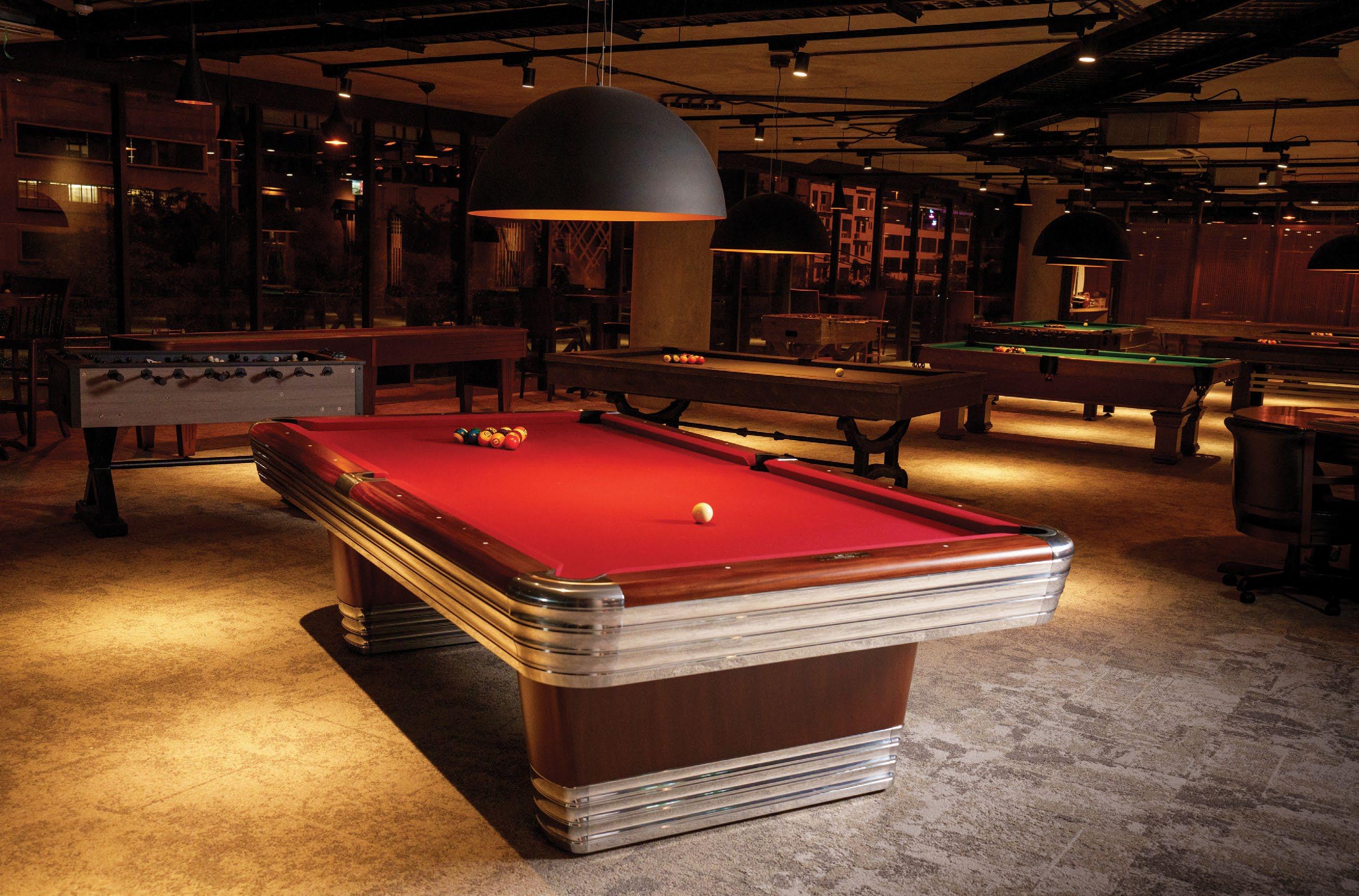




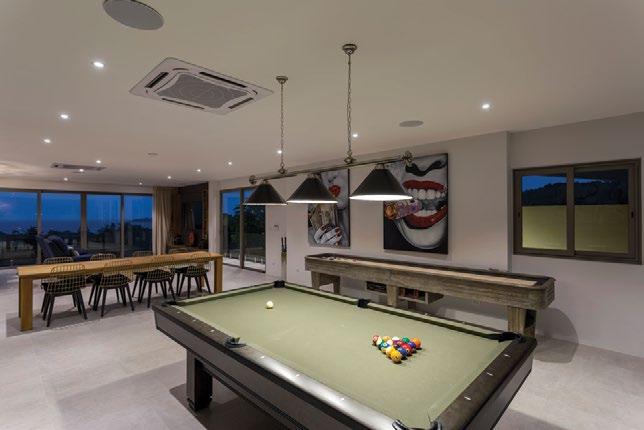





17
36
Project Confidential: Health is wealth
Property seekers have their health needs catered for at KL Wellness City: Southeast Asia’s first township dedicated to wellness
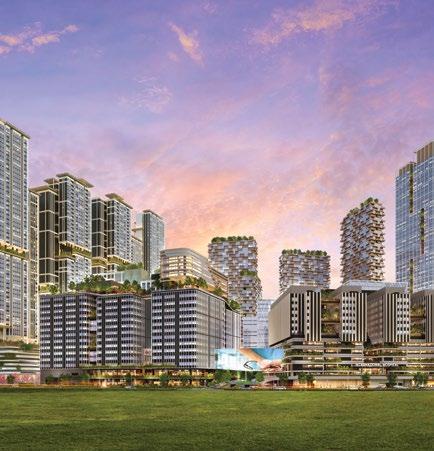
44
Interview: Nose for new frontiers
Bill Barnett retains a strong instinct for opportunities after a long tenure in Asia

32
Style
Conjure some haunting beauty for the spooky season

54
Design Focus: Evolutionary thinking
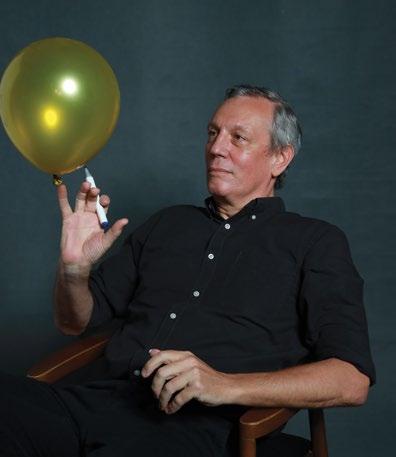

Archetype Group has overseen numerous transformative projects in Southeast Asia

18
Trends
your
haven 26 Gadgets
widgets make for great travel companions CONTENTS | Issue 180
30
Make
home’s most private space a
These
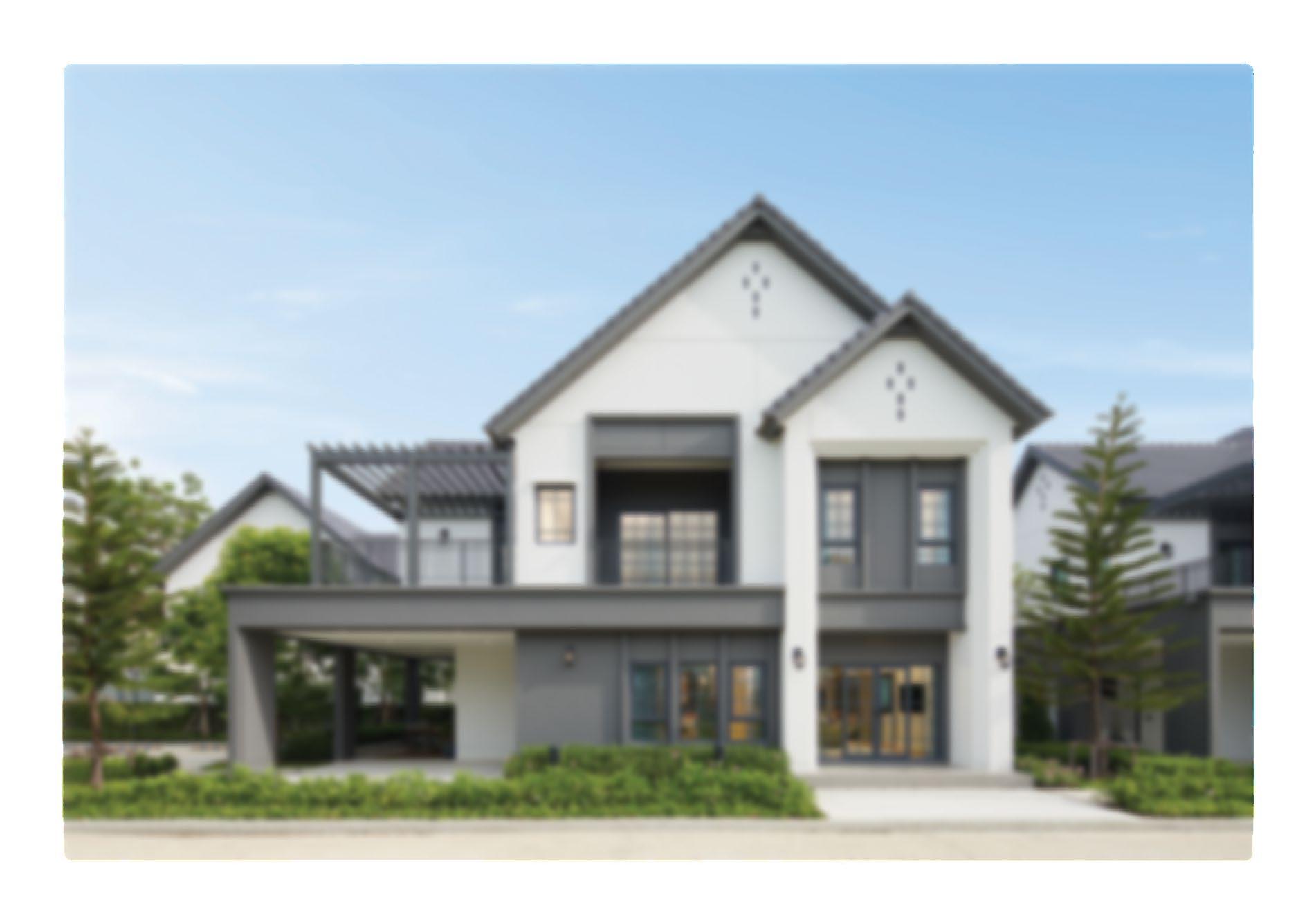
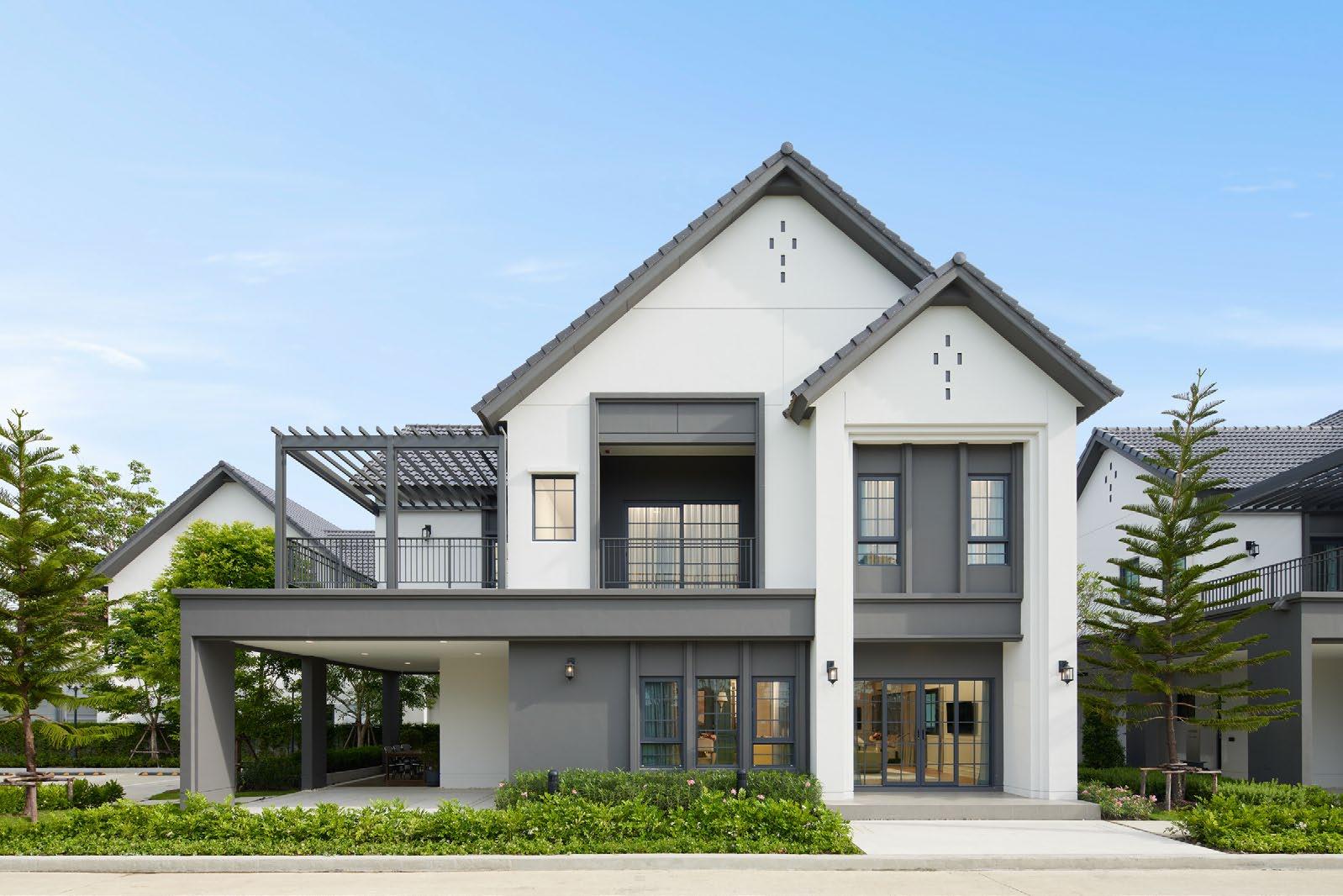
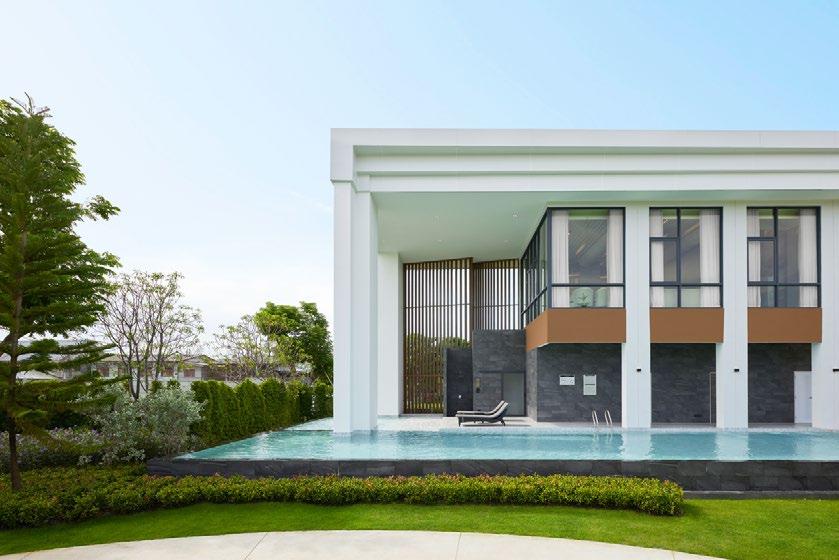
19
CONTENTS | Issue 180
70
Neighbourhood Watch: Depok
A hub for shopping and education near Jakarta, Depok is a much-coveted address for real estate investors
72
Special feature: Fruitful roots
With market conditions and regulatory changes working in their favour, NRI investors are supercharging India’s real estate scene
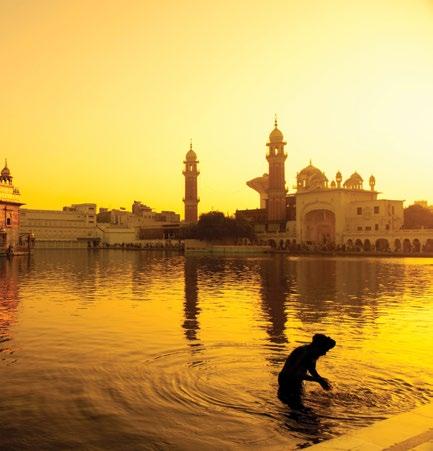

82 Destination: Niseko

The property sector in Greater Niseko is heading back onpiste as Japan regains lost momentum
90 Destination: Australia

Soaring mortgage payments and other factors are putting a dampener on the real estate investment scene
100 Dispatch: Uncertain steppes
Ulaanbaatar’s housing boom has exposed planning deficiencies within unprecedented growth

103 Dispatch: Back to basics
There are signs of life in Myanmar’s real estate sector, especially at the lower end of the residential market

20




21
The Golden Ratio of Living
Bringing harmony to everyday life, real estate developer Lofter Group introduces The Timeless Series, a bold new succession of projects that embody balance in Hong Kong living
In the tapestry of Hong Kong’s urban landscape, a timeless allure emerges.
Hong Kong, romanticised in the arts and real life for its dynamic energy and vibrant urban landscape, is home to a collection of residential buildings that defy the rapid pace of change. These buildings stand as silent witnesses to the city’s evolution.
Indeed, Hong Kong’s heritage buildings encapsulate its rich past and diverse architecture. Tenement houses, walk-ups, shophouses, colonial-era structures, and temples reflect how far the city has come.
These treasures embody a blend of Eastern and Western influences, offering insights into Hong Kong’s community life. Preserving such buildings is thereby crucial because they connect a modern metropolis to its roots.
Past, present, and future collide in the form of 181 Sai Yee Street, the first
venture by property developer Lofter Group into residential development. It is also the first in a series of residential developments by the company aptly called The Timeless Series.
Situated at the eponymous street in the bustling heart of Mong Kok, 181 Sai Yee Street is a sophisticated 21-storey residential development with a mix of uses. This architectural marvel welcomes a new chapter for the neighbourhood and takes it into an era of modernisation that is still grounded in the past.
Comprising 52 exquisite units, 181 Sai Yee Street has an extensive array of layouts, spanning from 240 square feet to 450 sq ft, tailored to suit the needs of young professionals and contemporary families.
The appreciation for Hong Kong’s cultural heritage and artistic richness comes as its citizens gain more wisdom. There are now around 3.52 million people aged 35 to 64 living

in Hong Kong. The youngest of this set, mostly born in the 1980s, display a reverential attitude towards arts and culture even as they seek equilibrium in their personal and professional spheres. A good portion of millennials, those born from 1981 to 1996, are known for their high household incomes in Hong Kong.
The design of 181 Sai Yee Street is notable for the harmonious fusion of materials, prominently displayed in the crescent-shaped balconies. They allude to the unique urban tapestry of Hong Kong while proudly showcasing its distinct identity.
At its core, The Timeless Series is not just about architecture. It is a symphony that harmonises form and function, environmental sustainability, smart living, and wellness concepts that ensure utmost comfort for residents.
The Timeless Series is an opportunity to put the concept of the “Golden
22 ADVERTORIAL
Ratio” of Living into practice. This concept encapsulates the essence of harmonious coexistence and life balance, mirroring the delicate harmony people seek in their daily lives.
In addition to 181 Sai Yee Street, Lofter Group has readied more exciting projects within The Timeless Series. They include the illustrious project known as No. 1-15 Ki Lung Street in Prince Edward, which brings an iconic 50-year-old tong lau (tenement building) back to life, as well as No. 2C-2D Boundary Street in Tai Kok Tsui; and Nos. 2-4A Ping Lan Street & Nos. 26-28 Ho King Street in Ap Lei Chau.

ADVERTORIAL
In addition to music, The Timeless Series also finds its way into the world of movies. Lofter Group has created the “Moonlight Treasure Box” (月光 寶盒), a thoughtful gift inspired by legendary film star Stephen Chow. Depicted as a time travel tool on film, this unique creation aligns with the concept of The Timeless Series, where old items transcend the limits of time.
With the same vision, Lofter Group collaborated with local NGOs to donate clothes and electric home appliances. These community engagement initiatives resonate with the essence of The Timeless Series—coexistence, inclusion, and sustainability.
Lofter Group’s exhibition, Old Hong Kong - Fusion- Art Concept Studio, celebrates the seamless blending of old and new in the city’s architecture, as witnessed by the Ki Lung Street development, and gives new life to cherished relics.


To showcase the spirit of Hong Kong culture, Lofter Group also sponsored 852FES, a prestigious music festival held at AsiaExpo. During the day, Lofter Group helped present the city’s world-famous street culture, ultimately tying into the essence of The Timeless Series as a harmonious integration of local elements.
All the projects under The Timeless Series will benefit from implementing the Golden Ratio, enriching the lives of all those who become part of this exceptional living experience. At its heart, The Timeless Series is more than just a vision of artistry in architecture; it is a celebration of the golden ratio that governs the balance between tradition and modernity in everyday life.
23
EDITOR’S NOTE
Issue 180
Given the challenges of living in the present, it can always be tempting to indulge in nostalgia. And our Emerging Markets issue always gives us the opportunity to do just that.
Although ostensibly a window into the future—an insight to the destinations around Southeast and South Asia that are primed for change—it also never fails to inspire wonderment at the evolution that has occurred in this region over the past couple of decades.

It was only just a few years ago that cities such as Ho Chi Minh City, Phnom Penh and Jakarta fell squarely into the up-and-comers category. Fast forward to the present and these destinations—and other former investment frontiers—are well and truly established.
Yet while the wild (and some might say more thrilling) days of yore when huge opportunities presented themselves to those with a high threshold for risk may be over, there remains scope for strong returns around Asia.
In South Asia for instance, NRI investment has supercharged the Indian market. Dhaka, meanwhile, is witnessing strong economic growth. Elsewhere in the region investors are eyeing secondary markets such as Depok just outside Jarkarta as well as familiar names like Hua Hin in Thailand.
In this issue we take a look at some of these trends via market analysis of Greater Niseko, South Asia, and Australia as well as interviews and profiles of long-term players in this fascinating—and oh-so dynamic—part of the world.
Duncan Forgan Property Report duncan@propertyguru.com

24



25
TOUR TRINKETS
As useful in the air as they are on land, these widgets make for great travel companions
JOURNEY JOULES
Nimble’s Champ Portable Charger uses high-density batteries, offering a 10,000mAh capacity (good for three days of power) in an ultra-compact package. This fastcharging gizmo is all housed in 72.5% post-consumer plastic, dramatically shrinking its carbon footprint compared to most competitors.
USD62.95, gonimble.com

26 DETAILS | Gadgets
C M Y CM MY CY CMY K




27
DETAILS | Gadgets
TRANSIT TECH
Say goodbye to excess baggage fees with Etekcity’s dependable, accurate luggage scale. The scale can weigh luggage up to 50 kilograms heavy. But the device itself is very light at just under five ounces. A true travel essential, it also has a temperature sensor.

USD11.98, etekcity.com
JET-SETTER JEWELS
Sometimes you prefer your own wireless headphones or earphones to the corded ones on the plane. Twelve South’s AirFly solves this predicament. A nifty wireless adapter, the AirFly can easily connect your audio devices to the in-flight entertainment system. The Duo version lets one more person connect to the same screen.
USD54.99, twelvesouth.com
ADVENTURE APPARATUS
Clothes all wrinkly in your luggage after landing? No sweat—Conair’s handheld travel garment steamer has an adjustable steam head, making it easy to cover all angles, evening out every crease. It heats up in just 35 seconds and has an easy-fill water tank.

USD59.99, conair.com
GLOBETROTTING GIZMO
Epicka’s all-in-one adapter stands ready to plug your devices wherever you are on earth. With retractable prongs enabling compatibility across more than 150 nations, the adapter has versatile ports to charge six devices all at once: including USB ports, USB-C ports, and a universal AC socket.

From USD22.99, epickatech.com

28
THE LIFE AFTER TOMORROW
NEW BEGINNING OF LIVING WITH ULTRAMODERN DESIGNS.
LET YOUR EVERYDAY LIFE AT KAVE AVA BE FULL OF COLORS AND JOY.
In a typical Kavean, our project designed with a concept of Futuristic. A spectacular modern along with color and lines of living in harmony with nature that connected both inside and outside, combined with the beginning of life. Ava Pod, 360 degrees ellipsoid, surrounded with enjoyment, including 2 storey The Gym Pod provided you a Panorama view, 3 pools 3 styles and also common areas with more than 48 facilities. Fulfill everyday lifestyle with Ava Concierge Service which ready to serve the Kavean.
DESIGN CONCEPT
“Simple arrangement for easy access, with the common area available at the floor area that can thoroughly connect with the garden outside the building. Indoor and outdoor common areas cover over 7,000 sq.m. with clear separation of interior working space.”
Factors in choosing residence
Convenient location, easy transportation to the institution
Nearby facilities, close to many restaurants and convenience stores

Clean and safe room and environment, friendly neighborhood
Factors for the student in choosing condominium
Higher standard of overall project supervision and safety
Attractive and interesting facilities within the project
More orderly and better society
29 KAVE AVA by ASSETWISE BEST AFFORDABLE CONDO DEVELOPMENT (BANGKOK) WINNER
assetwise.co.th 02 168 0000
WASHROOM WONDERS
Make your home’s most private space a haven
NAME IN VAIN
Room & Board’s freestanding Copenhagen vanity can be customised in a wide variety of wooden and MDF finishes. The 60-inch-wide cabinet, which has a steel base, can accommodate one basin and countertop space, with softclose birch plywood drawers and adjustable wooden shelves within.
From USD2,199, roomandboard.com

30 DETAILS | Trends
SUDSY SPOT
Pedestal bathroom sinks are back in style—as if they ever went away. Pottery Barn’s Saif sink looks especially elegant with its generously sized basin and square base, giving small washrooms a spacious feel.

USD301, potterybarn.com
FAIREST OF ALL
With its interactive touchscreen capabilities, the Hilo Smart Mirror is a hub for connectivity and entertainment, letting you access apps, social networks, and more as you primp for going out. Boasting built-in Wi-Fi and Bluetooth speakers, it’s a mirror that is nothing short of magic.

USD889, hilosmartmirror.com
RINSE AND RETREAT
Elevate your bathroom with the Jonàk Walnut Tall Cabinet. Crafted from FSC-certified solid walnut, it adds Scandinavian charm to any bathroom and discreetly stores towels, mats, and more. This versatile 180-centimetre-tall cabinet seamlessly complements existing furniture.

GBP649, tikamoon.co.uk
BATHING BUDDY
Standing up to shower can be a taxing chore for the elderly and sick. Enter the SUMGREEN shower seat, a hip-conforming chair made of eco-friendly bamboo with drainage holes. Sat on an aluminium frame that can be adjusted to various heights, the seat can accommodate 300-pound weights.
USD72.69, amazon.com

31
EERIE ESTATE
Conjure a hauntingly beautiful haven for the spooky season with these bewitching embellishments
TOMBSTONE TOAST
The Skeleton Wine Glass is a creep-tastic addition to your drinkware. The showstopping stems are handcrafted of zinc alloy, shaped into joyful bony figures and topped with sodalime glass. Each piece, which can hold up to 13 ounces of beverage, features handblown glass.
USD29.50, potterybarn.com

32 DETAILS | Style
HEAD OFF
Heads will turn to admire Department 56’s eye-catching model of Ichabod Crane’s cottage house in the legend of Sleepy Hollow. Just imagine the superstitious schoolmaster, who encounters the Headless Horseman, burning the midnight oil in this cute ornament perfect for the season of spooks.

USD150, department56.com
IN LOVE WITH FALL
River of Goods has created a beautiful Samhain décor in “Patch,” a tiffany table lamp designed like a pumpkin. See the warm light glow through handcut pieces of real stained glass. With an inline switch, the lamp is easy to turn on and off.

USD79.99, riverofgoods.com
CAULDRON COMFORT
Halloween dinner parties are as sumptuous as can be with the Curiosity salad plates, available in sets of four. The microwave-ready, dishwasher-safe plates, each with a diameter of 8.5 inches, sport moody designs and are made of durable stoneware.

USD52, westelm.com
DARK NIGHT
Make sure your front door means business this Halloween with the Midnight Raven Wreath. The inky blue, black, and purple leaves and tendrils may just sparkle in the moonlight. At the centre is a replica of a raven, standing sentinel below a black polyester fabric bow.
USD169, grandinroad.com

33
Dream Tropical Homes
It’s time to #StartLiving in The Residences at Sheraton Cebu Mactan Resort, a place in which to holiday, settle, or retire in one of the Philippines’ most scenic island destinations

Cebu continues to make its mark as a tourism hub as the Philippines opens its beautiful archipelago anew to international travellers. In 2022, the province ushered in over 544,000 foreign tourists and 2.21 million tourists, forging a way forward to recovery from the pandemic, according to official figures.
Cebu has also made a splash as a viable retirement destination where the cost of living is low enough for people of a certain age to seek better value for their money. Prospective retirees can easily establish themselves in the locale, with most Cebuanos able to communicate in English. Most goods and conveniences are within easy reach from Cebu, the capital of the same name being a historically important economic centre and port city.
The core lure of Cebu lies in its scenic beauty. The province has a nearly 514-kilometre-long coastline, harbouring pristine beaches coveted by snowbirds and lovers of tropical climes worldwide. Beaches on mainland Cebu and its surrounding isles have appeared time and again in bestof lists on international publications.
Award-winning Cebu homes
Travelers and retirees enter Cebu province through its historic gateway: the island of Mactan. Home to busy Mactan-Cebu International Airport, Mactan witnessed the arrival of the first Spanish explorers in the Philippines.
Centuries later, some of the world’s most recognisable hospitality brands have made their own expeditions to the island, no doubt attracted to its natural appeal and central location. In 2016, Mactan was chosen as the home of the first Sheraton-branded residences in Southeast Asia.
An award-winning development by AppleOne Mactan, The Residences at Sheraton Cebu Mactan Resort seamlessly integrates a holiday destination with luxurious residential spaces. The 44,000-square-metre property is conveniently set adjacent to Sheraton Cebu Mactan Resort, the first Marriott-branded resort in the Philippines.
A property development titan in Cebu, AppleOne developed such landmark projects in the province as AppleOne Equicom Tower, AppleOne Banawa Heights, and Mahi Center.
“Through our luxury developments, and our commitment to levelling Cebu to be at par with global standards, we hope to contribute to its allure as a smart city destination for tourists and locals,” says AppleOne vice-president for marketing Javier Marcalain.
Every day amounts to a beach holiday at The Residences at Sheraton Cebu Mactan Resort. The lay of the land reaches down to reveal a golden beach with exposed rocks, creating a scenic extension into the sea. The global architecture
34 ADVERTORIAL
ADVERTORIAL
firm Blink Design Group took inspiration from these aweinspiring littoral landscapes to deck the residential towers and villas in plush materials like natural stone, marble, luxurious fabrics, rattan, and wood.

The Residences at Sheraton Cebu Mactan Resort offer a choice of 154 homes, in one- to three-bedroom configurations, within a 22-storey main tower. The tower maintains a low density of units, with only up to six homes per wing.
The development also houses the exclusive Courtyard Villas at The Residences, made up of 36 villas in twobedroom homes and three-bedroom loft configurations. Every Courtyard Villa comes with its own private plunge pool while an expansive lagoon pool completes the premium resort experience for the community. Oversized windows give residents dramatic vistas of the private pools or cliffside panoramas of the sea.
#StartLiving your best, healthiest, most flavourful life
Everyday routines feel extra special at The Residences at Sheraton Cebu Mactan Resort. In these fabulous Cebuano homes, it’s never too late to #StartLiving.
Dining is not a mundane moment but an experiential activity—whether the dishes are prepared at the indulgent
restaurants of the resort or at home in the well-appointed kitchens of the Residences.
The Residences at Sheraton Cebu Mactan Resort cultivate a lifestyle of wellness with amenities like a fully fitted fitness centre, steam rooms, a yoga room, signature spa, and the residents-only Beach Club. Retirees and holiday homeowners can get in shape in the Residences’ naturally invigorating, beachside outdoor spaces.
With constant, easy access to the Sheraton Cebu Mactan Resort, residents get exclusive privileges like in-residence housekeeping and botanical services, laundry services, and the like.
With the full might of the AppleOne and Marriott brands behind it, The Residences at Sheraton Cebu Mactan Resort let you step into a world of refined elegance and serenity. Every corner of the property reflects your unique taste and desire for elevated living.
From the waterfront views that greet you every morning to the meticulously designed interiors that envelop you in comfort, this is the tropical sanctuary that you’ve always envisioned in Southeast Asia.
35
HEALTH IS WEALTH

36
BY AL GERARD DE LA CRUZ

37
As new fitness ideals of grip Malaysia, property seekers are catered for at KL Wellness City: Southeast Asia’s first township dedicated to wellness
How would doctors envision a city?
Obstetrician and gynaecologist Dato’ Dr. Colin Lee fielded that question quite well with KL Wellness City (KLWC) in Malaysia.
The renowned fertility specialist banded with fellow medical professionals to develop the township, the first dedicated to healthcare and wellness in Southeast Asia. The “360-degree wellness hub,” in Lee’s words, is masterplanned to“embrace the ageing nation,” referencing Malaysia’s rapidly greying populace.
Now under construction, the first phase of KLWC is anchored on The Nobel Healthcare Park, three towers of medical, wellness, business, and retail suites connected by link bridges to the 12-storey-high International Hospital @ KL Wellness City.

The thought of integrating an entire ecosystem of healthcare services came to Lee after developing another
hospital, Tropicana Medical Centre (now Thomson Hospital Kota Damansara), in 2008.
“There is a point of difference here because the people who build will be the people running the hospital and the city,” says Dato’ Sri Dr Vincent Tiew, executive director of branding, sales and marketing at the development company KL Wellness City Sdn Bhd. “We know exactly what are the weaknesses or areas that we should pay attention to in order to ensure we are operationally efficient and cost-effective.”
The dream from the get-go was to find land huge enough to fit the bill of “wellness real estate,” as defined by the Global Wellness Institute (GWI). By 2016, after years of negotiation with landowners, the developer had acquired seven individually titled parcels in Bukit Julil, an affluent suburb of Kuala Lumpur, to form the current site—a massive affair at 26.49 acres.
38
KLWC IS PURPOSEFULLY DESIGNED WITH A VISION OF A 360-DEGREE WELLNESS HUB CENTRED AROUND ITS TOWNSHIP, ENCOMPASSING ASPECTS OF MEDICAL CARE, HEALTH, WELLNESS, FITNESS, AND BUSINESS, COMPLETE WITH RESIDENTIAL, RETAIL, AND COMMERCIAL OFFERINGS
The developer approached architects experienced in medical and hospitality developments. As lead architect, Konzepte Asia Sdn Bhd ticked many of the developer’s boxes, and the admiration was mutual.
“When we first spoke to Colin, we got really excited because there was a sort of genuine sense and a very honest approach that he wanted to take,” says Konzepte partner Nicholas Ling, recalling his first discussions with the company in 2015. “That means it’s not just what we call ‘wellness-washing’ a project. A lot of developers do that. They put a swimming pool in their project, and they call it a ‘wellness project.’”
Ling, known for delivering projects like the Lady Cilento Children’s Hospital in Brisbane, dialogued with the city council, Dewan Bandaraya Kuala Lumpur (DBKL), during the master-planning process. The unprecedented nature of the project confounded the city hall at first, but its wellness framework spoke for itself. “Because of that, they gave us the density that we wanted,” says Ling, noting that the
township’s central park will ultimately be handed over to the city government.

The pandemic eventuated in nine months of intense design processes done virtually. Around this time, age-old ideas of natural cross-ventilation and longstanding building wellness standards reignited public interest.
The zeitgeist suited the conceptualisation of KLWC just fine. Ling made it clear that the built structures of KLWC should not be “air-con boxes.” The artifice of indoor climate control was traded, where possible, for passive cooling ways, shading techniques, and other practices of Malaysian tropical vernacular design.
People are generally made to encounter a garden or outdoor space before entering air-conditioned clinical spaces. “You could be, say, in the ICU, and there’ll be a pocket garden just outside of you,” says Ling.
39
WHILE MANY TOWERS IN MALAYSIA SIT ON TOP OF HUGE CAR PARKS, KL WELLNESS CITY BOASTS AN OPEN, SPACIOUS GROUND PLANE, WITH PEOPLE GREETED BY THE BUILDINGS THEMSELVES AND THEIR MAIN ENTRIES
A COMPLETE ECOSYSTEM FOR HEALTHCARE PRACTITIONERS AND PATIENTS ALIKE, THE NOBEL HEALTHCARE PARK CONTAINS HUNDREDS OF MEDICAL SUITES FOR SPECIALISTS TO SET UP THEIR PRACTICE, IN ADDITION TO WELLNESS, BUSINESS, AND RETAIL SUITES

40
SPECIAL CARE
The township development known as KL Wellness City (KLWC) is a pioneering fluke in that it is, in many ways, created by healthcare practitioners for healthcare practitioners.
The township’s appeal partly hinges on the inclusion of privately owned “medical suites” or clinics suited to a diverse range of specialists. The township also has an abundance of operating theatres and advanced, specialised equipment to help medical practitioners in their practice.
Equipped with 624 beds, scalable to a 1,000bed capacity, the tertiary hospital at KL Wellness City is open to—and needs—all kinds of specialists. In peopling the medical suites, the developer initially sought out doctors who need a hospital base or those whose business requires support for inpatient stay. The team also targeted general surgeons and other medical professionals who deal with multiple operations in a day—and thereby need equipment that they normally will not buy for themselves.
“It’s not often that existing hospitals in Malaysia, be it private or public, continuously upgrade or bring in new equipments,” says Dato’ Sri Dr Vincent Tiew, executive director of branding, sales and marketing for KLWC. “Equipment is expensive. You just don’t bring it in and buy a new one after seven years.”
All too often, these high-value assets become obsolete before they can be fully utilised and cost-effectively replaced by the hospital. These life-saving tools typically cost hospitals more than MYR30 million to MYR50 million.
At KLWC, the sheer size of its hospital enables economies of scale that facilitate equipment investments. The extensive bed capacity allows for efficient amortisation and the ability to serve a diverse populace, according to Nicholas Ling, partner at Konzepte Asia Sdn Bhd, the lead architect for the township. “It’s almost an ecosystem in that way,” he says.
41
WE STARTED WITH THIS IDEA OF ADAPTABILITY AND FLEXIBILITY, AND THAT’S HAND IN HAND WITH SUSTAINABILITY AS WELL. YOU DON’T WANT TO HAVE TO KNOCK THINGS DOWN. HEALTHCARE CHANGES OVER TIME
A SHOWROOM FOR THE WELLNESS SUITES, ENVISIONED AS SHORTTERM STAYS FOR PATIENTS AND HEALTHCARE TRAVELERS WHO MAY NEED FURTHER CONSULTATIONS OR PROCEDURES, AS WELL AS THEIR LOVED ONES

Such manoeuvres are necessary as the project guns for Green Building Index (GBI) certification, a balancing act between the developer’s eco-aspirations and patients’ need for a controlled, comfortable environment.
“In Malaysia particularly, a hospital that is GBI-certified is quite rare,” says Tiew. “It’s quite a big thumbs up for ourselves, a feather in our cap.”
The manoeuvres are also congruent with the scientific thinking at home with the project’s medically trained leaders. Access to natural environments, let alone views to them, are linked to good recovery outcomes, research says. Windows at the township possess a greater vertical tilt than usual, inspired by studies on the benefits of being able to see the ground from certain heights. The developer also eschewed enclosed corridors and winding spaces for navigable layouts that allow people to orientate themselves in the building.
“Hospitals are typically designed almost like rabbit warrens,” says Ling. “You come into the front door, and then you feel you’re going to get lost. The further you go in, the more stress you get because you worry you can’t get back to where you need to go. So, we’ve designed it from day one with the patient, the visitor at the centre.”
To the developer, it was imperative for architects to use building information modelling (BIM), preventing massive substantial variations and unnecessary wastage. The models keep the healthcare park and hospital on track for a 2025 completion.
“Right from the early stage, before the first pile cap was done, we were able to clearly see the whole design of each room and each floor itself,” says Tiew. “That’s seeing it like a doctor trying to do surgery.”
By early 2022, KLWC initiated piling and earthworks. The topography of the site gently inclines from one end to the other across approximately 15 metres. Its width covers several hundred metres, enabling the architects to place parking amenities either beneath ground level or a simulated ground floor.
The team strategically maximised the unique slope configuration according to height restrictions set by the Ministry of Health. The tallest of the healthcare park buildings rises only to 17 storeys, housing 512 wellness suites ideal for short-term stays by medical tourists and hospital inpatients who need monitoring after discharging.
42
CONFIGURED IN VARIOUS LAYOUTS, INCLUDING STUDIOS AND ONE-BEDROOM TYPES, THE WELLNESS SUITES ARE LIKENED TO SLEEK HOTEL ROOMS AND CONDOMINIUMS, BUT WITH BETTER, OPTIMISED DIMENSIONS FOR MAXIMUM ACCESSIBILITY TO PATIENTS AND HOSPITAL STAFF

In addition to 55 retail suites and 50,000 sq ft of business suites, the healthcare park houses 379 medical suites that doctors can privately own as clinics. Konzepte gave the suites, averaging around 650 sq ft in size, a modular design that expands to combine with adjoining units. Along with the hospital, the medical suites follow an open-plan layout, featuring columns at consistent, modular grids.
“We started with this idea of adaptability and flexibility, and that’s hand in hand with sustainability as well,” says Ling. “You don’t want to have to knock things down. Healthcare changes over time. The needs and requirements change.”
Several more healthcare centres and hospitals are expected to rise across the five as-yet-undeveloped parcels of the site. The future projects for seniors are particularly resonant since people aged 65 years and above now account for over 7% of the Malaysian populace.
But the needs of ageing people in Malaysia are not a monolith. In that light, the township has residential spaces tracking the full spectrum of retirement, old age, and decrepitude. These vary from senior living blocks for active agers to multi-generational condominiums for ageing-in-
place households to an assisted living tower for those that require 24-hour care.
“You will no longer see an old folks’ home that combines people who are old and frail with people who are healthy,” says Tiew. “We are going way beyond, 10 steps ahead of that in Malaysia. We are moving forward.”
With a projected development value of MYR11 billion, the city is expected to evolve with the needs of its inhabitants over time. Health may be wealth, but the math also makes sense.
“Everything here is so scientifically designed,” says Ling. “It’s not my opinion. It’s all based on empirical data and research down to the position of the windows. We wanted sustainability to be real, to be felt, to be seen, and to have actual outcomes. We wanted people to continue to thrive within the city, within our buildings, as long as they’re there.”
43

44
Nose for new frontiers
Bill Barnett retains a strong instinct for opportunities after witnessing the progress of Asia’s hospitality and real estate scene during a long tenure in the region
BY BILL CHARLES
45

46
BILL BARNETT SAYS THAT HUA HIN IS EVOLVING INTO ONE OF THAILAND’S MOST DESIRABLE INVESTMENT DESTINATIONS
We like to have sustainability at the table when we start designing things. What are the green areas? What’s the plan 10 years from now with electricity and water? How can we have more sustainable development?
While living in Hawaii some 30-odd years ago, Bill Barnett read a book about Michael Rockefeller that changed the trajectory of his life.
Rockefeller, an heir in the dynastic American family, famously disappeared near the Sepik River in Papua New Guinea in 1961.
As Barnett read about what had happened, he became convinced he needed to see the place for himself.
So, he picked up and moved there, finding a job in the country’s highlands region that marked the beginning of a new life and career in Asia.

47
Barnett later moved to the Philippines, arriving as President Ferdinand Marcos was toppled under the People Power Revolution, and eventually made his way to mainland Southeast Asia, where he became the first American hotel manager to work in post-war Vietnam in 1992.
“Yeah, it’s been an interesting time,” Barnett reflects. “As Asia grew, there were just so many new opportunities.”
His hotel work—he spent time up and down Vietnam, in Hong Kong, and elsewhere on the continent—led to a position in real estate at Laguna, the integrated community in Phuket in southern Thailand.
And then one day, Barnett decided to combine his experience in hotels and property development to form C9 Hotelworks (short for “Cloud 9”), a hospitality and real estate advisory group that today works across Asia Pacific and beyond.

“We’re typically the first group people contact when they have an idea for a new development project,” says Barnett, a native of California.
The Phuket-based company had projects last year in 11 countries, including as far away as Rwanda, performing market research and feasibility studies, in addition to “creating unique DNA for clients and a forward-looking view in the market,” Barnett says.
C9 Hotelworks is involved in everything from resorts and city hotels to ultra luxury private villas, all the way to glamping resorts, private islands, and branded residences in places like the Maldives.
When you look beyond traditional mainstream markets like Bangkok, Phuket and Bali, where do you see exciting things happening in real estate?
I always think it’s interesting to look within a short distance of capital areas where people are going. Khao
48
SUPPLY CHAIN DISRUPTION IN CHINA HAS PROMPTED DEVELOPERS TO SEEK OTHER SOURCING SOLUTIONS
Yai outside of Bangkok is one example where things are happening. And I think Hua Hin will continue to transform.
Hua Hin is interesting because the international school and infrastructure—the highway—have grown along with it. That’s creating a new market for people to live there full-time. It’s transforming from a holiday or retirement place into something where people want to live.
What are some unique trends you’re seeing in the region?
I think the co-living concept is interesting. We really like a company called Homa. Their model is to get a hotel license. Then they can rent long-term but they can also rent short-term. So, they’re able to effectively manage the yield. Unlike property developers that come in and sell the property, their model is meant to retain the asset to make it into a cash-flow machine.
Big demand generators for this model include places with international flights, international schools, hospitals,
resort areas—places where you have a lot of mid-tier management who want long-term accommodation. They want to rent. They want something a little better, which is maybe not just living in their own apartment, but it’s easy to move in and everything’s already there. You know: WiFi, drinking water, good gym, co-working space. It’s easy to come and go.
Co-living is interesting because you’re going to have a lot more people who want to be flexible. In Phuket, we see a lot of tech guys coming in and spending three to six months a year working here, and they want that kind of experience. They want to intermingle. They don’t want to rent long-term. They don’t want to rent a hotel room. It’s something in between.

With regard to property development, much has been said about the impact of supply chains, inflation, and the Ukraine war. What are some other major challenges you see right now?
I think you have to say what’s happening in China. Every
49
PHUKET REMAINS A SOUGHT-AFTER BASE FOR RUSSIANS AND OTHER NATIONALITIES
market sees that as a solution both for tourism and for property, and the economic reality is that the slowdown has been coming for a long time. The pandemic didn’t create the China problem. Nothing goes in straight lines forever.
So, the writing has been on the wall for this, but I think people are certainly struggling with it. We do a lot of projects that use prefabricated pieces from China. Now, with supply chain disruption in China, people are looking to Vietnam and other solutions. But you don’t know how much a project is going to cost because commodity prices are going up so quickly. Inflation is hurting the market. And currency is interesting—up and down. There’s a lot of uncertainty.
Russian buyers and renters are quite active in major Southeast Asian markets like Phuket and Bali. What do you see on the ground there?
We saw a great impact in Q1 and Q2, but we’ve seen a softening of that now. Those traditionally were buyers who

would come during high season. The question is: What’s going to happen after the ruble got devalued? Are there going to be more Russians who want to take their money out? It’s the same thing with Russians and Chinese: They want to bring their money out for investment. But when the currency is so low, is it better just to leave it there or not?
Fundamentally with Russians they’ve been investment buyers, but they’ve also been end-users of real estate, which is good. And they’re buying in cash, so even if the market softens out, it’d be a soft landing. The next high season is an unknown. I think it’ll be about the currency.
What other demographic changes do you see in the region?
We see a return of multigenerational living. That’s important for both domestic and foreign buyers. We’re seeing foreigners who bring their parents and grandparents to live with them.
50
HOTELS OFTEN FAIL TO SEE THE LONG-TERM BENEFITS OF INVESTING IN RENEWABLE ENERGY LIKE SOLAR
Pre-Covid in Thailand, we’d see people moving into condos—the detachment of the family compound. Now we’re seeing people gather again. The value system and lifestyles change. Also, people are working from home. They don’t need to be in the office all the time. So, they view their residences as places that also need dedicated working areas—which often means they need larger spaces. And I think that’s going to continue.
How does C9 Hotelworks try to improve sustainability in real estate development?
From a hotel perspective, owners often only see cost. The developer says, “No, I can’t afford it. It’s going to be more expensive.” But a hotel’s value is not how much it cost to build and the replacement value of the hotel. Valuation is based on discounted cash flow, meaning profit—the long-term profitability of the hotel. We like to have sustainability at the table when we start designing things. What are the green areas? What’s the plan 10 years from
now with electricity and water? How can we have more sustainable development?

The biggest costs for a hotel are staffing and energy. If you’re able to do a sustainable project at lower energy cost, your profit is more and your long-term valuation of the property is more. And I think it’s really important to get developers to understand that. Our intention is to influence developers to do this because it makes economic sense—but also for sustainability.
If you go to Singapore, it’s expected to do these things. You go to Europe and it’s expected to do the same. In the US, it’s expected. But it’s not expected to be done here. And so, I think we have a responsibility to encourage the market to start doing it here.
51
Embracing a Greener Future
Global networks HLB and Multilaw portend the prospects and challenges of ESG around the world
by Paul Ashburn
ESG or environmental, social, and governance has become a significant factor in the real estate sector, with stakeholders and investors increasingly prioritising sustainable practices.
Governments are implementing energy efficiency standards. Investors as well as tenants are insisting on more sustainable buildings. Energy-efficient properties are expected to have higher occupancy rates and lower vacancy rates while low-quality, inefficient buildings will require significant investment.
Real estate also plays a vital social role, positively impacting local communities and attracting consumers, thereby boosting the local economy. These considerations and other ESG factors are now shaping investment

decisions, development projects, and ongoing operations in the real estate sector, according to a global outlook published by HLB and Multilaw.
HLB, a global advisory and accounting network, and Multilaw, a global network of law firms, joined forces earlier in 2023 to co-author a report on how an increased focus on sustainability is shaping the real estate sector.

Drawing on the real estate expertise of both networks, the report finds that the importance of adopting more sustainable practices in the sector is high. It also reveals that economic challenges, such as rising construction costs, have made it difficult for investors and developers to meet ESG expectations.
Nevertheless, despite the challenging economic climate, real estate opportunities are plentiful, from the growing subletting business to the rising importance of proptech.
Technological innovations are playing a crucial role in making real estate more sustainable. Smart building technology, including sensors and IoT devices, helps monitor and reduce energy consumption while sustainable materials and construction practices minimise environmental impact. Virtual and augmented reality aid in visualising designs and improving sustainability.
Proptech also promotes the adoption of renewable energy sources like solar panels and energy storage systems. These innovations are driving the
52 ADVERTORIAL
There’s a lot of proptech being developed that is able to collect and measure data and report about sustainable practices to not only focus on your own sustainable practices, but also of your suppliers, too, to develop that whole supply chain that is sustainable
real estate industry towards a more sustainable future.
There’s a lot of proptech being developed that is able to collect and measure data and report about sustainable practices to not only focus on your own sustainable practices, but also of your suppliers, too, to develop that whole supply chain that is sustainable.

From a global perspective, ESG practices vary greatly across the world. Asia is seeing a marked increase in traction for green leases. They constitute an agreement between tenant and landlord to improve the property’s environmental performance through cuts in energy and water usage and reducing waste.
Meanwhile, the Middle East are viewing ESG as a top priority ahead
of the Conference of the Parties of the UNFCCC (COP28) summit in November 2023. The summit, which is the 28th United Nations Climate Change conference, is being hosted by the UAE. While climate concerns have been a big consideration in the region for several years, the summit has spurred an even greater commitment to creating sustainable buildings.
Africa is seeing sustainability rise as a megatrend that is forcing change. It seems likely that the African region will need to craft its own unique approach to the creation of sustainable buildings which is more in line with its GDP per capita.

ESG is also starting to take more precedence in Latin America (LATAM) and the Caribbean. Companies and governments are issuing many sustainability-linked bonds to create
ESG policies with genuine impact.
Investors and lenders across Europe are increasingly analysing the credentials of their investments through an ESG lens. This is challenging investors and governments as they juggle ESG policy, economic growth, and asset growth.
In contrast to Europe, the US is divided in opinions regarding climate change. Some of the country’s more prominent landlords are still sceptical of the view that higher rates result from sustainability or ESG features. Instead, they view the “newness” or novelty of these buildings as the cause of the rate increases.
In the coming years, the real estate sector will see a continual rise in advances that will pave the way for more sustainable practice. The capabilities of proptech to drive sustainability in real estate are exciting and promising.
By leveraging technology to monitor energy usage; using sustainable materials and practices; and adopting renewable energy sources, the real estate industry can make significant progress towards a more sustainable, greener future.
Paul is co-managing partner of HLB Thailand. In that position he shows that relationships with clients and colleagues are key to display the true value of HLB as a leading provider of professional services to clients carrying on business in Thailand. With over 30 years of experience providing professional services, including more than 20 years in Thailand, his international experience and inquisitive character allow him to view opportunities at hand and offer new ways to set up processes and to give room for new and better services to clients.
To download the report by HLB and Multilaw, visit www.hlb.global
53 ADVERTORIAL
Evolutionary thinking
Jean-Francois Chevance, director of design at Archetype Group, has overseen numerous transformative projects around Southeast Asia over the last 20 years
 BY LIAM ARAN BARNES
BY LIAM ARAN BARNES
54
In the not-so-distant past, touching down in Siem Reap felt like arriving in a world frozen in time.
But it wasn’t the temple complex at Angkor, one of the world’s great cultural wonders, that transported air travellers to a bygone era upon arrival.
For years, Siem Reap’s dark, dingy airport welcomed visitors with the inescapable smell of mould and mildew. Outside the single-building terminal, befuddled tourists were confronted by rowdy tuk-tuk drivers and stifling tropical heat. This was the Cambodia of contemporary folklore—off limits to all but the most intrepid of travellers.
The situation improved with the construction of a new terminal in 2006. And nowadays, except for subtle nods to Angkorian architecture and ever-present tuk-tuks (now summoned via apps rather than shouting contests), arriving in Siem Reap largely resembles landing at any other provincial Asian airport.
The country’s tourism industry experienced another major boost this year when the brandnew Siem Reap Angkor International Airport began operations. Located 50 kilometres southeast of the city, the three-phase airport will initially serve around seven million passengers annually, with projections of accommodating 10 million by 2030 and 20 million by 2050.
Elaborating on the impact, Jean-Francois Chevance, director of design at Archetype Group, the firm behind the 700-hectare development’s blueprint, notes, “This is a project that will not only bolster tourism but will bring transformative change to the local community. It’s within the realm of large-scale master planning, especially of transport hubs, where we witness the greatest influence on communities.”
55
JEAN-FRANCOIS CHEVANCE BELIEVES THAT ARCHITECTURE CAN BRING TRANSFORMATIVE CHANGE FOR COMMUNITIES

Chevance is no stranger to transformative projects. His trajectory, once aimed at the sea, diverged as his fascination with architecture grew. Switching his course from becoming a naval officer, he attended the prestigious Paris Villemin School of Architecture and the Paris-la-Seine School of Architecture. After gaining invaluable experience in various firms across the French capital, his journey led him to Archetype in 2003.
Since then, Chevance’s responsibilities in the group have been both diverse and influential. Primarily working in Vietnam and Cambodia, he has dedicated over two decades to designing and managing projects in the emerging markets of Southeast Asia.
“The architecture and design landscape here has experienced a dynamic evolution over the years, with different countries embracing distinct architectural languages,” he says. “The education of students has improved significantly, and clients, having been exposed to global architectural trends, have become more discerning and demanding compared to two decades ago.”
Furthermore, Chevance takes on the role of mentor, instilling in junior architects a philosophy rooted in attentive listening. This entails not only comprehending clients’ visions but also guiding them to discover the essence of their projects. “It’s a twofold process—listening to their vision and helping them realise what they truly need.”
Chevance also underscores Archetype Group’s commitment to community upliftment in less advantaged regions. Projects such as the Paul Dubrule Hospitality School and the Kairos School in Ho Chi Minh City hold a particular place of pride, representing the positive impact design can have on local life.
Beyond his regional work, Chevance helms Archetype’s global hotel portfolio, overseeing properties across 18 countries for renowned
hospitality brands like Aman, Raffles, St. Regis, RitzCarlton, Mandarin Oriental, and Shangri-La. But what is evident from talking with Chevance, however, is that Archetype, launched out of Vietnam in 2002, remains committed to its vision of serving emerging markets.
“Architecture and design, particularly urban planning, play an outsized role in shaping cities and communities in emerging markets,” he says. “These markets are characterised by rapid growth and new infrastructural developments. The decisions we make as architects and designers have far-reaching consequences—both positive and negative—for the communities that inhabit these spaces.”
Across Southeast Asia, Archetype’s footprint now spans commercial, retail, residential, transportation, healthcare, and hospitality sectors. Impressive projects to date include South Quarter, a 7.9-hectare mixed-use development in Jakarta’s CBD, the fivestar Amanoi resort in Vietnam’s Nui Chua National Park, and Ho Chi Minh City’s high-rise Etown 6 Tower. Among these, the new Siem Reap Angkor International Airport stands out for Chevance.
“This project was a remarkable endeavour due to its grand scale and the challenge of merging an airport with resort-style aesthetics,” Chevance explains. “But the one that remains closest to my heart is the Belmont La Residence Angkor in Siem Reap. This marked my first role as the main designer from concept to construction, and its success means a great deal to me.”
It is fitting that, two decades since his initial venture in Siem Reap, Chevance’s influence continues to shape the city’s tourism landscape, with his fingerprints imprinted on another milestone as the international airport welcomes its first passengers this October.
57
Emerging markets are characteriSed by rapid growth and new infrastructural developments. The decisions we make as architects and designers have far-reaching consequences—both positive and negative—for the communities that inhabit these spaces

58
Amanoi Resort
Conceived in partnership with starchitect Jean-Michel Gathy’s Denniston Architects, Amanoi Resort has one of Vietnam’s most impressive locations. The 53-room retreat, Vietnam’s inaugural Aman property, is a world apart from civilisation, perched on a secluded cliff along the Nui Chua National Park’s coastline.

“Collaborating on the design of Amanoi alongside the esteemed Denniston firm truly highlights our capability to craft original luxurious and harmonious environments,” Chevance says.
Archetype’s role spanned from early concept design in 2008 to the resort’s grand opening in September 2013, and encompassed comprehensive engineering and architectural design, project management, and cost oversight.
59
Aman Nai Lert
Upon completion in 2024, the upcoming 36-storey structure will house a 52-suite hotel, approximately 50 residences, and a range of luxury leisure and entertainment amenities. This collaboration marks Archetype’s second with Gathy and Denniston, bringing together the prestigious Aman brand and Nai Lert Park Development in Thailand. Chevance remarks, “It’s an honour to collaborate once more with Denniston and Aman, contributing to an iconic addition to Bangkok’s hospitality and luxury residential scene.”
Nestled within the century-old tropical gardens of Nai Lert Park, the design takes inspiration from the park’s serenity and heritage while incorporating the elegance of the Aman brand. Amenity-wise, residents can enjoy a private Aman fitness centre, a yoga/pilates studio, and a children’s pool, as well as access to Aman Nai Lert Bangkok Hotel’s features, including the Holistic Wellness Centre, Nai Lert Butlers, and a range of dining services.

60

61
e.Town 6
Following the recent completion of e.Town Central in Ho Chi Minh City’s District 4, Archetype was commissioned to lead the design for e.Town 6, the latest endeavour by local developer REE Corporation. Situated in Tan Binh District’s thriving CBD, the expansive 36,780 square metres of premium-grade commercial space stands out for its sleek glass facade inspired by minimalist high-rises that blend with their surroundings.
“The client had lofty expectations for this project, set to house one of Ho Chi Minh City’s most iconic business communities,” explains Chevance. “We believe this edifice will stand as a testament to the remarkable growth of this dynamic area.”
Scheduled for lease availability in January 2024, the development also features state-ofthe-art facilities and is within easy reach of the city’s transport hubs and leading lifestyle amenities.

62


63



64
Mirai by Nirman
This 30-floor, 36,000-sqm contemporary office tower will be one of the most significant additions to Dhaka’s skyline upon completion. Situated in the heart of the city’s thriving Tejgaon business district, Mirai by Nirman, with 30,000-sqm of gross floor area, will offer international-grade office space with an emphasis on innovation and sustainability.

“We approached this landmark development for Dhaka with the idea of creating the optimal environment for productivity,” Chevance explains.
Featuring a double-glazed unitised façade and cutting-edge elevators with a destination control system, Mirai by Nirman promises an array of top-tier amenities, including a rooftop pool, an in-house gym, verdant gardens, and terraces. An upscale restaurant on the 13th floor will provide panoramic vistas of Dhaka’s dynamic cityscape and Hatirjheel Lake.
65

66
Orkide The Royal Condominium
With its shimmering gold exterior soaring into the sky above Phnom Penh, Orkide The Royal Condominium is eye-catching to say the least. Arguably more attention-grabbing than the exterior, however, is the first-of-its-kind manmade garden and beach pool that intersects with six towers, each comprising 18 floors.

Described by Chevance as “one of the most ambitious developments of this size to be built in the capital,” Orkide The Royal Condominium merges mixed-use high-rise offices and apartments.

Completed in 2022, the project boasts myriad amenities, complemented by the 51,000-sqm Royal Shopping Mall, hotel, and international supermarket. The encompassing 3.2-hectare Royal Garden, meanwhile, boasts more than 100 facilities, including a swimming pool, gym, steam and sauna rooms, walking tracks, and dedicated rooftop gardens for each tower.

67


68
South Quarter Residences
The South Quarter Residences, known as SQ Rés, aim to combine South Jakarta’s most desirable assets, lifestyle amenities and connectivity, with resort-style, eco-friendly residences.

Set across almost 8 hectares, the one-bedroom, two-bedroom, and dual-key luxury apartments are complemented by fitness-focused onsite amenities. These include the Zen lobby, wellness-focused jogging tracks, fitness and yoga studios, tropical pools, a spa, a beauty salon, and a children’s playground. A core aspect of SQ Rés is its emphasis on connectivity, and walkability. The complex is interconnected by sidewalks, footpaths, and elevated walkways, seamlessly linking residential towers with commercial, retail, and lifestyle venues.
“An urban oasis is a cliché, but we set out to create a breath of fresh air in the heart of the city for professional families, first-time buyers, and those seeking a meaningful urban experience,” Chevance explains.
69
Satellite of love
BY JONATHAN EVANS
A hub for shopping and education near Jakarta, Depok is becoming a much-coveted address for real estate investors 1 2 3

Cimanggis Golf Estate


A work in progress that’s scheduled for completion early next year, this neatly landscaped, eco-forward development is well placed to benefit from local transport links for venturing within and beyond Jakarta. The 660-unit gated community will feature an extensive indoor market and other retail outlets, while sporting facilities in the vicinity include the eponymous golf course, gym, basketball court, tennis court, and swimming pool. The estate itself uses smart features and digital systems in its advanced lighting techniques. Interior design from Pandega Desain Weharima veers towards the minimal, with beige and cream tones most prominent in the twostorey townhouses.
Shila at Sawangan
This project comprising 411 semi-detached and detached modern family houses has an uncommonly high proportion of forested and arboreal coverage (55%), lending the impression that this downtown locale is in a more remote place altogether. Shila at Sawangan has consequently proven a big hit with Depok dwellers who cherish tranquility and green space—even extending to the units themselves, which feature a garden between the ground-floor living room and bedroom. The wood, concrete and glass material combination helps ventilation to circulate and sunlight to flood living space, while add-ons like a double garage, dual kitchen, and private roof deck further entice punters.
Taman Mini Indonesia Indah
First dreamt up in 1975 by then president Suharto’s wife, “Beautiful Indonesia Mini Park” was an ambitious attempt at encapsulating all the country’s provinces— not just their architecture, but their inhabitants’ culture and clothing—in one theme park surrounding a lake. Over time, more amusements were added such as cable cars, museums, a cinema, and theatre. After the secession of East Timor in 2002 and eight more provinces were created (making the total 34), space had to be found for newcomers like Bangka-Belitung, West Sulawesi and West Papua. Somehow builders made room for numerous plant gardens, religious buildings, and children’s areas too. An epic undertaking if one considers the exhaustive construction involved, TMII embodies Indonesia’s ethnic and religious harmony, and remains among Greater Jakarta’s biggest tourist destinations even today.
70
A crowded city-within-a-city on the eastern side of Jakarta, Depok still has enough space for huge public attractions and sought-after upscale real estate. The last satellite city to be welded to the gigantic urban block that is Greater Jakarta, Depok was also the last to emerge when it seceded from Bogor in 1999. To outsiders, it might still be obscure. But it’s still among Indonesia’s top 10 most populous cities in its own right. Despite it being decimated in 1945 during the Indonesian National Revolution, rapid reconstruction allowed the city to flourish in the 80s and 90s, and Depok is now one of Jakarta’s most important hubs for shopping and education, home to numerous private language schools and universities. The city shuttles thousands of commuters daily, so its desirable new residences are becoming much-coveted addresses within the metropolis.
4 5 6
Ragunan Zoo

The oldest zoo in the country, this rainforest park was established in 1864 and is one of Greater Jakarta’s largest public spaces at 147 hectares. For a century, it sprawled across legendary painter Raden Saleh’s private land in Cikini in central Jakarta, before burgeoning resident numbers forced a relocation; it’s now home to 2,290 animals and 335 species. Ragunan is particularly strong in the bird department, while rare and endangered mammals such as the Bornean orangutan, babirusa (deerpig), Javan rusa deer, Komodo dragon, and Sumatran tiger complement the Indonesian creature quotient. In this crowded area of Greater Jakarta filled with infrastructure and malls, the zoo also provides muchneeded breathing space, with some 50,000 trees giving plenty of shade for walkers, joggers and visitors to reconnect with the natural world.
Dian Al-Mahri Mosque
Also known as the Golden Dome Mosque for obvious reasons, Depok’s most treasured and largest religious place of worship is also its most beautiful. Its minarets and solid-gold domes—their centrepiece resembling Agra, India’s Taj Mahal—tower above a building that’s capable of holding 20,000 worshippers. The six minarets are hexagonal, with small 24-karat golden domes at their tallest point that symbolise the Islamic pillars of faith. Ornate to the finish, the decorative interior features a series of chandeliers imported from Italy, with a relief above the imam’s residence also made of 18-karat gold. What’s most surprising—aside from the mosque’s staggering dimensions and lavishness—is that it dates back only 17 years, having originated in a successful land purchase by a Javan businesswoman in the early noughties.

Warung Kopi Nako
In Depok City, Jalan Margonda Raya is undisputed foodie central with a reputation for spicy dishes. This principal artery hosts most of the top restaurants, including an intriguing hospital-themed eatery where wait-staff are dressed as nurses. Warung Kopi Nako is far from outlandish, but the greenhouse-like structure does flaunt one of the city’s most spacious interiors—a pale colour scheme bathed in natural light— making a desirable backdrop to your coffee break. This café is heaven for the young caffeinated set, with the best-selling Ice Coffee Nako Durian mixing bitter espresso with the meat (not the syrup) from the pungent fruit. Other novelty flavours are available, like Chocopresso (coffee flavoured like chocolate), Japanese Monkey (banana, milk and matcha ice cream) and the self-explanatory Banana Milk Oreo.
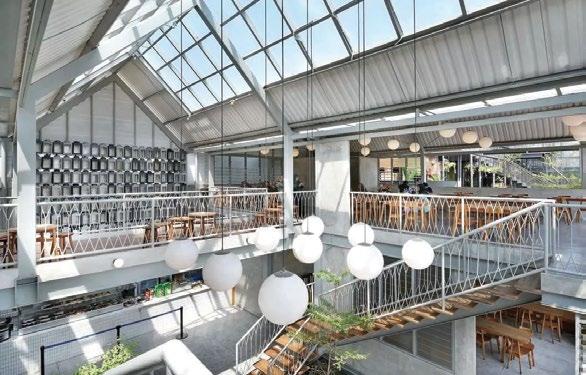
71
FRUITFUL ROOTS
With market conditions as well as regulatory changes working in their favour, NRI investors are supercharging India’s real estate scene
 BY LIAM ARAN BARNES
BY LIAM ARAN BARNES
72

73
From the bustling boroughs of New York to Sydney’s sundappled neighbourhoods, and the dazzling skylines of Dubai and Abu Dhabi, echoes of India’s rich cultural tapestry resonate far and wide.
This migratory saga, with roots dating back centuries to maritime expeditions to the Middle East, Southeast Asia, and Africa, has spanned generations. It culminated in waves of Indians dispersing across continents during the colonial and post-independence eras.
According to the latest UN estimates, about 18 million of the 281 million migrants worldwide are from India. Now, many of the world’s largest diaspora stand at a fresh crossroads, as the threads of heritage woven across time and space draw them back to their ancestral homeland—a journey buoyed by the allure of thriving real estate prospects.
74
Looking at India’s positive economic growth trajectory, the stage is set for a transformative era in NRI property investment, marked by sustainable gains and a deepening connection to their ROOTS
“There are so many objectives and motivations driving investments by non-resident Indians (NRIs),” says Sangeet Hemant Kumar, founder of SHK Global Ventures, a Mumbai-based real estate consultancy. “While some may invest with the intention of relocating or retiring in India, others see it as a financial investment opportunity or a way to maintain ties to their homeland.”
The sweeping economic reforms of the 1990s, marked by the liberalisation of foreign exchange and investment policies, dismantled the regulatory hurdles NRIs previously encountered when attempting to acquire property in India.
More recently, the landmark implementation of the Real Estate (Regulation and Development) Act, 2016 (RERA) brought about increased transparency and accountability to the sector, benefiting both domestic buyers and NRIs alike.
In the wake of the pandemic, the contribution of NRIs to premium real estate sales has reportedly surged, more than doubling to 20% of all transactions. A significant number of high net-worth individuals (HNWIs), many of them NRIs, meanwhile, plan to buy luxury real estate in the next two years, according to a recent survey by India Sotheby’s International Realty.

Indeed, most observers agree that current market conditions are highly favourable for overseas investors, particularly in the upper echelons of the market. The interplay of financial pragmatism with the promise of lucrative returns is a particularly powerful motivator, especially given the current strength of the dollar against the Indian rupee.
“Global NRIs are channelling resources, drawn from hubs like the Gulf Cooperation Council countries, the US, and the UK, leveraging the stability of these economies,”
75
DUBAI AND THE REST OF THE GULF COOPERATION COUNCIL (GCC) COUNTRIES ARE A MAJOR HUB FOR GLOBAL NRIS
explains Keval Valambhia, chief operating officer of CREDAI MCHI, a prominent real estate association. He adds that the vast majority of NRI investors continue to hail from these destinations, in addition to Australia, Canada, and Southeast Asia.
For NRIs, individual markets across the country hold their unique appeal. Major metropolitan areas like Delhi-NCR, Hyderabad, and Bengaluru continue to lead the pack. A recent joint survey by property consultancy firm Anarock and the Confederation of Indian Industry revealed that 60% of respondents are inclined to invest in one of these destinations.
Second-tier cities are also gaining attention due to lower property prices and the potential for higher returns as urbanisation and development expand. Coastal states such as Goa, Kerala, and Tamil Nadu, meanwhile, are experiencing
BENGALURU IN THE STATE OF KARNATAKA IS A FAVOURITE WITH NRI INVESTORS DUE TO ITS STRONG ECONOMIC PROSPECTS

heightened demand from those seeking rental income, vacation homes, and retirement properties.
“NRIs are increasingly open to newer products, such as holiday homes, student accommodations, and coliving properties,” says Ajai A Kapoor, CEO of Mumbai-based real estate firm 360 Degrees. “Overall, a balanced consideration of rental return and potential capital appreciation remains key.”
Another factor behind the post-pandemic NRI investment boom is the increasing role of technology in facilitating property purchases. The acceleration of virtual and augmented reality-driven tours during the lockdowns, for instance, made it easier than ever to search for and purchase properties from overseas.
76
Moreover, AI-powered algorithms have vastly improved data-driven property valuation and market analysis, while the emergence of secure long-distance transaction technology has fostered greater trust and convenience in remote financial dealings and document management.
In 2020, India became the world’s largest real-time payment market, boasting 25.5 billion annual transactions. The Unified Payment Interface, a smartphonebased system for instant fund transfers between bank accounts, has tie-ups with major NRI hubs such as Singapore, the US, Australia, Canada, Hong Kong, Oman, Qatar, Saudi Arabia, UAE, and the UK.
But beneath these economic drivers flows an emotional undercurrent. The vision of owning a piece of their homeland plays a pivotal role in NRIs’ decision-making process. Many prefer properties in their home states due to family connections.
THE COASTAL STATE OF GOA OFFERS PLENTY OF ALLURING OPTIONS FOR SECOND-HOME BUYERS

“Pride is certainly associated with these investments—a profound desire to be part of India’s ongoing growth story,” notes Kapoor. These investments not only stimulate markets, especially in smaller cities, but also promote economic growth by funding real estate and businesses. This, in turn, boosts infrastructure development, living standards, and foreign exchange reserves, contributing to the country’s financial stability.
In some instances though, NRI investments can exacerbate socioeconomic inequalities. High demand and real estate prices can widen the economic divide, making housing unaffordable for locals. Kumar emphasises that careful regulation and diversification of investment sectors are crucial to mitigate these challenges.
Despite the potential drawbacks, the prevailing sentiment is clear: NRI investment is a force for positive
77
ECONOMIC
GROWTH IN DHAKA, THE CAPITAL OF BANGLADESH, FAR OUTSTRIPS MANY OF ITS REGIONAL COUNTERPARTS

78
change. Experts believe that continued reforms, enhanced transparency, simplified regulatory processes, and supportive policies are needed to attract and retain NRI investments.
“With the nation’s economic growth trajectory, the stage is set for a transformative era in NRI property investment, marked by sustainable gains and a deepening connection to their roots,” Valambhia says.
In a world where horizons are increasingly blurred, technology diminishes distances, and cultures intermingle with ease, the recent surge in NRI investments is a testament to the significance of cultural ties. And as NRIs continue to invest in their homeland, these contributions not only bolster the economy but also reinforce the bridge between their past and the future of India’s real estate landscape.
Bangladesh gets a boost
Dhaka, like many burgeoning megacities in the Global South, frequently bears the stigma of being one of the most inhospitable cities on the planet.
In the 2023 edition of its annual global liveability index, the Economist Intelligence Unit, the research and analysis division of the Economist Group, ranked the Bangladeshi capital 166th out of 173 cities.

The city’s narrative is often dominated by images of overcrowding, slums, and substandard housing. With a population of 23 million, Dhaka often grapples with some of the most severe air pollution worldwide. To many observers, there appear to be few silver linings.
And yet the country’s economic growth continues to far outstrip its regional counterparts. Per capita, its GDP is already bigger than neighbouring India. In 2021, the International Monetary Fund (IMF) predicted Bangladesh’s gross domestic product would soon exceed that of Denmark or Singapore.
This bright outlook was however dimmed last year by the post-pandemic global economic slowdown that has wreaked havoc
79
in developing countries. The downturn was underscored in January when the IMF loaned the country USD4.7 billion.
Nonetheless, Bangladesh’s GDP is predicted to reach USD1 trillion by 2040 and real estate looks set to play a crucial role. According to the Bangladesh Bureau of Statistics, the sector contributed almost 8% to the economy in the last fiscal year. This marked a significant year-onyear increase, highlighting the sector’s expanding role. Increased urbanisation, rising income, and a growing middle class were cited as the key drivers by Alamgir Shamsul Alamin Kajal, president of the Real Estate and Housing Association of Bangladesh (REHAB).
“The government should prioritise the sector and formalise a sector-friendly policy in the next budget, considering the employment opportunities it generates,” adds Alamin. He also suggests that the government reduce the recently increased registration fee and offer
SINGAPORE’S PROXIMITY TO INDIA MAKES IT ANOTHER PREFERRED BASE FOR NRI
discounts to incentivise first-time buyers. In 2022, the prime minister endorsed the Detailed Action Plan, a comprehensive 20-year blueprint designed to enhance Dhaka’s liveability and modernity.

While this ambitious plan has sparked optimism, real estate experts voice concerns about potential decentralisation, which could inflate property prices by up to 50%, rendering apartments unaffordable for many.
On a more positive note, the plan reportedly encompasses the creation of 202 kilometres of new cycle lanes and 574 kilometres of waterways. It envisions the establishment of nearly 30 new parks, including reserves and conservation zones, along with an array of new educational institutions and healthcare facilities.
The question of whether this ambitious plan can effectively address Dhaka’s environmental and population challenges remains uncertain. Regardless, the
80
coming years will be crucial for shaping the future of one of the world’s most maligned cities.
Stormy conditions in Pakistan
Smoke and mirrors, rather than bricks and mortar, remain the foundations of Pakistan’s property market.
The sector is plagued with numerous issues, including overpricing, artificial growth, and various manipulations. In recent years, speculation and lack of transparency and regulation in the industry have resulted in significant asset-price bubbles, leading to a volatile market, while the lack of reliable data makes informed investment decisions almost impossible.
For the intrepid, there are opportunities to be had. Prominent developers, like Defence Housing Society and Bahria Town, are seen as reliable and trustworthy. Inevitably properties by these developers

PAKISTAN’S REAL ESTATE MARKET IS PLAGUED BY SEVERAL DIFFICULTIES, NOT LEAST THE NATION’S ONGOING POLITICAL TURMOIL
command much higher prices due to their perceived credibility.
A sharp decline in remittances from the country’s diaspora in recent years has also hit the market hard. According to Mohammad Hassan Bakhshi, former chairman of the Association of Builders and Developers, overseas Pakistanis on average invested USD10 billion in the property market before the pandemic.
But with the recent economic downturn and heightened political instability expected to continue, there are concerns many may permanently opt for safer ports amidst Pakistan’s ongoing storm.
81
COMING IN FROM THE COLD
The fortunes of the Greater Niseko property market were frozen during the pandemic, but the sector is heading back on-piste as Japan regains lost momentum
 BY AL GERARD DE LA CRUZ
BY AL GERARD DE LA CRUZ
Japan, one of the pandemic’s last holdouts, reopened to the world before winter in 2022—just in time for ski season.
At long last, winter sports enthusiasts were able to make a return pilgrimage to the country just in time for the first drops of the Japanese powder snow that famously blankets its northern isles. The most famous of these ski destinations, Greater Niseko, saw its real estate market come out of icy stasis.

Despite concerns over oversupply, the alpine ski resorts of the Niseko Range, a collection of volcanoes on the island of Hokkaido, are enthralling foreign buyers anew.
“In our opinion, the residential segment has already recovered from the pandemic and is doing well,” says Eddie Guillemette, CEO of MnK Resorts & Hospitality, a leading resort management and accommodation provider in Hokkaido. “Demand is strong, and supply keeps coming online.”
Niseko’s real estate investment prospects are historically wedded to Japan’s tourism industry. As of May, the archipelago has received 8.6 million visits in 2023, according to data from Japan National Tourism Organisation (JNTO). This eclipses the nearly 246,000 visits recorded for the entirety of 2021.
“Japan as a whole has seen an influx from both tourists and real estate investors since the reopening of the borders,” says Guillemette. “There are likely two factors contributing to this. People love visiting Japan and Niseko in particular, and the currency has been at a historically low level, making it cost-effective.”

In October 2022, the same month as Japan’s reopening, the yen depreciated to its weakest level against the US dollar since August 1998. The yen’s descent against the greenback
by the end of 2023 is almost assured as the US Federal Reserve loosens its monetary tightening policies.
“The dollar strength has certainly improved sentiment towards Japan and makes spending on real estate and tourism more attractive,” says Guillemette.
The Niseko region has over 2,000 beds in the pipeline as a gaggle of big-brand, international hotel operators are set to enter the market in the next 24 months, according to property management solutions provider Niseko Portfolio and Explore Travel Group.
Hanazono, one of the resorts that comprise the Niseko United ski area on Mount Annupuri, is enjoying upward traction as a luxury neighbourhood. Notable recent developments include Park Hyatt Niseko Hanazono, set to release additional villas
84
NISEKO’S INVESTMENT POTENTIAL IS ENHANCED BY ITS WIDE LIFESTYLE AND ENTERTAINMENT OPTIONS
for sale this year; an onsen-connected estate, Hanacreek; and local iterations of the international hotels Capella and Nikko Style.

In Grand Hirafu, MUWA Niseko and the Hoshinoya Hütte Niseko are poised to add to the resort area’s profusion of ski-in and ski-out properties.
Some investors come to Niseko on the assumption that they can wring enough rental income from properties to cover ongoing expenses. Alas, rental yields in Niseko are challenging to predict. This year, yields and accommodation rates are declining across the board as they face downward pressures from the influx of new supply.
“The challenges in Niseko are the potential oversupply of large-scale apartment and hotel-type projects as well as
ASIAN INFLUX
Greater Niseko has made resort living an attractive alternative for Japanese locals and other Asians.
In Japan, citizens traditionally lack enthusiasm for the ski industry and are generally not inclined to live for months in a snowy area. “The Covid-19 story of Niseko has been the Japanese domestic market, and there is uplift in Japanese developers, tourism, and property buyers,” says Bill Barnett, founder and managing director of the hospitality consultancy C9 Hotelworks. “It’s a dynamic change and one that has mirrored much of Asia, with resort living being an attractive alternative in the work-from-home shift.”
Outside Japan, Singapore and Hong Kong remain the primary sources of Asian investments in Greater Niseko residences especially during winter, according to data from property management solutions provider Niseko Portfolio and Explore Travel Group. “But we have seen a lot more interest from regional emerging markets like China, Thailand, Indonesia and Philippines,” says Greg Hough, the group’s managing director.
The Chinese property buyers, who were a highgrowth market in 2019, remain the “elephant in the room,” according to Barnett.
While the western markets consider Niseko “a tick-box destination” for skiing, with guaranteed powder snow, the Asian markets tend to be more touristy, that is, focused on simply experiencing snow and culture. Asians will find plenty of non-skiing options in new attractions such as Family Snowland and Hakuba Happoone Snow Resort.
Niseko Portfolio and Explore Travel Group has also recorded solid growth from the US and European markets, even though those are endowed with world-famous ski destinations of their own.
Another market is breaking through from down under, reports Hough. “The Australian market is still relevant. However, they are looking more at the peripherals, away from the main resort areas, where there is a different price point, and away from the crowds.”
85
infrastructure constraints,” says Guillemette. “Niseko is a small farming community situated in a mountainous snow haven. The high-density projects fill the demand for peak winter tourist demand, but they will impact rental yields.”
The new developments have put power and freshwater constraints, as well as the lack of public transportation options, in stark relief. Even workers are in dangerously short supply.
Certain properties are nonetheless generating more favorable returns than others. “On the newer builds, the rental yields are lower, and the current proposition is based more on lifestyle and solid capital gain rather than short-term yields,” says Greg Hough, managing director of Niseko Portfolio and Explore Travel Group.
As a rule of thumb, properties in managed communities provide guests with activities and amenities such as transportation and F&B. For those, they can command higher yields than standalone properties, which suffer from heavy amounts of snow and a dearth of management solutions.
“If you are looking for an investment that you can enjoy yourself, that will likely appreciate in value over time, and can be rented out to help cover your investment holding costs, there are many good options in managed developments,” says Guillemette. “If you are looking for a high-yielding property with low management costs that is easy to sell at any time, that is harder to find in Niseko.” New regulations, set to take effect towards
the end of the year, may make it more difficult to develop larger properties in Niseko in the first place. This shift likely favours smaller land and house developers or boutique hotels, and balances commercial interests with the preservation of Niseko’s natural charm.
“It is not expected to have a dramatic impact on the market and in some ways is tempering mass development, which is not an entirely bad thing,” says Bill Barnett, founder and managing director of the hospitality consultancy C9 Hotelworks.
Finding income-generating rentals notwithstanding, land banking has experienced a resurgence in popularity, which was cut short by the pandemic. MnK has seen up to 20% in land price increases in Niseko over the past year. In contrast, land prices nationwide only inched up 1.6% by the end of 2022, based on data from the Ministry of Land, Infrastructure, Transport and Tourism (MLIT).
“The only real change we have noticed is the willingness to invest in real estate that is further away from the main ski areas,” says Guillemette. “This is a function of land prices being significantly cheaper just two kilometres away and as much as 10 times cheaper at only 10 kilometres away.”
For perspective, one could buy land up to two kilometres from the entrance to the mountain for USD1 million. That same amount of land 10 kilometres away, often with better views, could be purchased for USD100,000. As a result, areas that are as
86
Japan has seen an influx from both tourists and real estate investors since the reopening of the borders.
People love visiting Japan and Niseko in particular, and the currency has been at a historically low level, making it cost-effective
HARD LABOUR
Greater Niseko has so much fire, but it appears its labour market is out cold.
A labour crunch has hounded Niseko since the pandemic, which compounded Japan’s already stringent immigration controls and prevented companies from hiring overseas. Many hotels, resorts, and retailers have found themselves understaffed, forcing them to cut on services or operation hours.
“The hospitality part, that is, having enough qualified staff to support the needs of guests during peak periods, was already lagging, and the pandemic exasperated that situation with many workers choosing other options,” says Eddie Guillemette, CEO of resort management and accommodation provider MnK Resorts &
Hospitality. The devaluation of the yen is a culprit, making livelihood in Niseko untenable for foreign workers, especially those from nations with stronger currencies. Japan’s ageing population and low fertility rates also keep Niseko companies from seeking hires among native denizens.
“Over the past 15 years, much of the growth has been driven by development, and the tourism infrastructure has not kept up,” says Greg Hough, managing director of Niseko Portfolio and Explore Travel Group. “Staffing, staff housing, resort transportation, and other support services remain our biggest challenges.”

87
SMALLER LAND AND PROPERTY DEVELOPERS AND BOUTIQUE HOTELS ARE HELPING TO PRESERVE THE AREA’S NATURAL CHARM
far as 15 kilometres from the mountain are gaining traction due to the price differential.
“The construction costs are the same in both locations so the question becomes how to value convenience,” says Guillemette.
While its property market has been soft, Niseko has strong fundamentals overall, with improvements to the ski infrastructure a positive for long-term growth. Hanazono, for example, is investing on modernising its lifts, a welcome departure for an area sometimes derided for its obsolete facilities.
“Resort real estate, unlike urban property, is an emotional buy and often a lifestyle versus pure rental yield play,” says Barnett. “That said, early buyers in some leading projects have seen high levels of returns, but that has to be weighed against currency risk for foreign buyers that has an upside and a downside.”
On top of the possible constraints on high-density constructions, developers could face additional financial obligations to support essential infrastructure elements like water, electricity, and parking facilities.
“The impact of regulations like that is likely to be higher prices for property investors in new projects,” says Guillemette.
Post-Covid, investors are still bullish on Niseko, but concerns over a global economic downturn have slightly softened the market.

“The investment profile has shifted from high ROI expectations to more of a lifestyle investment,” says Hough.
The pandemic has transmogrified the property seeker in more ways than one. Niseko is as cosmopolitan as ever, but the typical makeup of buyers is morphing.
“Given the travel restrictions, many Japanese residents decided to visit during the pandemic in part due to the publicity the area has received as a haven for foreign tourism and investment,” explains Guillemette. “The perception of having an international experience while staying in Japan helped us attract these new visitors during the pandemic, and thankfully, some of those guests are looking to buy real estate in the area.”
88
HOKKAIDO IS LEGENDARY FOR THE QUALITY OF ITS POWDER SNOW
ALTHOUGH KNOWN FOR ITS WINTER SPORTS, NISEKO RETAINS ITS VISUAL SPLENDOUR YEAR-ROUND

A RESORT FOR ALL SEASONS
Greater Niseko is still very much a winter-centric resort destination. In other words, various factions of society must expend more efforts to drive and grow its summer business to a more sustainable model.
For some companies, like Niseko Portfolio and Explore Travel Group, summer business is still heavily reliant on domestic online travel agencies or OTAs.
“Summer is still a very small part of the overall revenue and visitation in much of the Niseko region,” says Greg Hough, the group’s managing director. “The challenge is that the winter is largely international and summer is largely domestic, and the requirements are very different. The summer markets are short stays, are more price-sensitive, and do not require much service, so we need to scale the business based on seasons.”
Summertime events and attractions have potential to make Niseko as appealing when green as it is when white. In 2023, the Niko Niko Summer Festival returned to Niseko after a three-year hiatus while the Niseko Hirafu Green Park brought the acclaimed Cinema Caravan to the highlands. In summer 2022, one of the longest zipline courses in the world opened at the Hanazono Zip World.
“Believe that in the longer term, tourism has momentum, and we will see the Niseko market mature into a year-round destination,” says Bill Barnett, founder and managing director of C9 Hotelworks.
89
INTEREST KILLER
 BY GEORGE STYLLIS
BY GEORGE STYLLIS

Soaring mortgage payments, unsustainable rent prices, and a shortage of available homes in major cities are putting a serious dampener on the real estate investment scene in Australia
On a recent overcast day in east Melbourne, Thomas Lindeman and his wife snapped up their new home.
At AUD1.6 million, theirs was the winning bid for a property in the suburb of Doncaster, and as they stripped apart the sold sticker and plastered it on the advertisement outside, their faces broke into broad smiles.
“It’s certainly a huge relief. And it’s nice to get the property within the range we were sort of looking at,” says the husband.
The Lindemans had looked at some 75 homes including townhouses, before buying the single-level, four-bedroom home, and might have ended up looking at dozens more had it not been for their ability to pay in cash.
A huge rise in mortgage rates has brought down house prices and put buyers like them—with cash—in a fortunate position. For the vast majority, however, the past year has been painful.
Between April and June, interest rates increased at a speed not seen in 30 years, saddling mortgage holders with crippling debts.
One of those, Andre Lattouf, was having to sell his home a year after buying it due to his mortgage repayments doubling.
“It’s choking us,” he told The Guardian. “It’s frustrating and sad. We spent so much time renovating this place and putting so much into it, but my mortgage repayments have almost doubled and it’s becoming a joke.”
In the second quarter of this year, residential sales declined 27% on the year as fewer houses came on the market.
In the rental market, Australia saw its lowest share of homes up for rent in 16 years at the end of the first quarter, at 1.4%.

In cities like Adelaide and Perth, vacancy rates were at their tightest, at 0.5% and 0.7%—far from a targeted level of 3%.
In Greater Brisbane and the Gold Coast, the rates were below 1%. Across regional Queensland, they were 1.2%.
“Australia’s interest rate is really killing the investment market,” says Benson Zhou, a director at Savills Australia.
92
A HUGE RISE IN MORTGAGE RATES HAS MADE IT HARD FOR BUYERS TO FIND SUITABLE HOMES IN CITIES LIKE MELBOURNE
Australians are entitled to ask how they can find a home as inflation drives up mortgages and rent prices become unsustainable, yet the federal government has presided over an intake of international students who filled the equivalent of seven out of 10 new homes
RICH PICKINGS FOR THE WEALTHY
Australia’s most expensive real estate has shown remarkable resilience over the past year despite the hike in interest rates. Record sale prices have been reported in suburbs around the country, with many located on waterfronts, large estates, and on the upper levels of apartment towers.

One of the biggest deals was for a tiny two-bedroom home on the waterfront of Cabarita, which was bought for AUD17,000 in 1969 and sold this year for a record AUD8 million. Its allure was its location—Cabarita is one of the most sought-after spots in Sydney’s inner west.
One of the reasons for these mega sales is that wealthy buyers are less reliant on a mortgage. At the same time,
Australia, along with the US and UK, has emerged as a perceived haven for buyers amid turmoil and economic instability elsewhere in the world.
A downside of late, however, has been the introduction of higher fees for Australia’s non-resident buyers.
While some might be put off by this, such new regulations are becoming standard in major economies.
Canada has brought in a ban on non-residents looking to buy this year and next year; Los Angeles has a new mansion tax; there are tighter lending rules in Singapore; and Spain now has a wealth tax.
93
“The property yield is still around only 4% or 5%, so it doesn’t make any financial sense,” he adds.
Other experts have offered a similarly bleak picture of the market but believe there’s reason to be more optimistic in the months ahead.
At the start of August, Australia’s central bank held interest rates at 4.1% for a second straight month, saying previous rate hikes were helping to cool demand.
While it couldn’t rule out a further tightening to curb inflation, many see the rate hold as a good sign.
“Our view is that the rate hiking cycle has peaked. However, it’s not likely we will see interest rates coming down until next year, probably through the second half of next year,” says Tim Lawless, Research Director at CoreLogic, a consultancy.
So, what does this mean for the property market?
Despite interest rates staying stubbornly high, prices have since risen as an expected supply of housing stock were yet to materialise by September, making it harder for buyers to negotiate on new properties.
According to CoreLogic, property prices rose in August while major banks are predicting further gains of about 7% in the
next 18 months. But much of that depends on whether more houses come on the market. The question is whether they are likely to.
Throughout July in Sydney and Melbourne, new listings were up around 9% in each city, which is a good sign. But there remain significant challenges to supply ahead.

The government approved 520,911 student visas in the last financial year, a new high.
“The first wave of [Chinese] buyers this year consisted of students who needed urgently to move to Australia to complete their studies in person,” says the co-founder of a high-profile Asian and Chinese international property portal.
“Students have also been joined by Chinese families who lived in China during the last three years, many of whom already had Australian permanent residency,” he adds.
According to the Institute of Public Affairs, international students took up 70% of the net new housing units supplied to the market, leaving just 30% for the rest of the country, including other new migrants.
The situation is only set to get tighter as the government is expected to bring in a further 187,000 net new international students, equivalent to 55% of the new housing supply.
94
DESIRABLE AREAS SUCH AS SYDNEY’S HARBOURFRONT ARE WITNESSING RECORD SALE PRICES
CHINESE INVESTORS RETURN IN FORCE
Chinese investors were absent from Australia for much of the pandemic, but now they’re back, cashed up and ready to buy. Pandemic restrictions saw the Chinese struggle to leave China and be admitted to Australia.
Australia has long been a favoured destination for property investment, and many investors have bulging bank accounts following the pandemic.
OH Property Group’s Henny Stier says the Chinese are rushing to buy everything from luxury homes to blocks of land, particularly in areas such as St Ives, a suburb on the Upper North Shore of Sydney.
“Just before the pandemic, Chinese investment was climbing by double digits,” says the co-founder of a high-profile Asian and Chinese international property portal.
“During the pandemic, it fell by at least half or 60%. Since China emerged in January from its Zero-Covid policies, investment has rapidly begun to recover. About one-third of Chinese buyers purchase in Victoria, about 30% in New South Wales, and about 20% in Queensland and Western Australia. “
The top destinations have a magnetism for buyers from China because of their educational opportunities, commercial and employment opportunities, and buyers’ ties to friends and family who already live there. A big factor that has drawn the Chinese back to Australia since it has become a sluggish local real estate market and tough economy.

95 AUSTRALIA IS A FAVOURED DESTINATION FOR CHINESE INVESTORS
“Australians are entitled to ask how they can find a home as inflation drives up mortgages and rent prices become unsustainable, yet the federal government has presided over an intake of international students who filled the equivalent of seven out of 10 new homes,” says IPA executive director Daniel Wild.
Wild added that the government has not “a single policy solution” to deal with the crisis and that it is “coming at an immense cost to Australians.”
Adding to supply fears are the woes of one of China’s biggest developers, Country Garden Holdings, which has a local subsidiary.
Country Garden has joined other major Chinese developers thought to be preparing a debt restructuring process—others include China Evergrande Group and Sunac China Holdings— after its shares hit a record low in August.
It comes after the developer warned it could report a loss of up to USD7.6 billion for the first half of the year and apologised to investors for misjudging market conditions.
Already other major Chinese developers such as Poly, Greenland, Yuhu, and Dalian Wanda have all either exited or downsized their Australian interests in the past few years.

Benson Zhou from Savills suspects some of this might be driven by Beijing to shore up China’s stalling economy, which has seen youth unemployment rise and its own housing market slump.
“I think overall the Chinese government is just trying to see money return to China, and reinvested back in China,” he says. “Obviously, they won’t tell you that, and I’m just guessing, but that’s what I think.”
CoreLogic’s Lawless says: “The medium-term outlook for housing supply remains an undersupply. Although the
96
THE GOLD COAST IN QUEENSLAND IS AMONG NUMEROUS LOCATIONS WITNESSING A SEVERE SHORTAGE IN RENTAL PROPERTIES
National Cabinet announced an ambitious goal to build 1.2 million new well-located dwellings over the five years commencing July next year, the reality is new housing supply is going to take some time to deliver.”
How China and the US’s economies fare in the months ahead will also be critical to determining Australia’s direction.
The US has bucked predictions of a crash and appears to be prospering. Wages are strong and inflation is coming down.
Many investors are looking to see if the Chinese government will put prudence aside and start spending.
“If, in fact, China doesn’t do a lot of stimulation, that’s going to have a negative impact on what happens locally in Australia,” says Martin North, an analyst at consultancy Digital Finance Analytics.
“We’re caught in the middle now. Our major trade partner is China but our major power of influence is the US.”
FROSTY RELATIONS SHOW SIGNS OF THAWING
Relations between Beijing and Canberra have plumbed new depths in recent years, but a thaw in relations appears to be underway.
Under the Morrison government, there was the mutual detainment of each other’s journalists and the revoking of visas for academics. Before that, under Malcolm Turnbull, the Australian Security Intelligence Organisation warned of growing Chinese attempts to influence decision-making in Canberra.
Most recently Anthony Albanese got China’s back up by securing a deal with the UK and US to acquire, operate, and eventually build nuclear-powered submarines.
Albanese didn’t mention China by name in his announcement of the deal. But there was no doubt who he was referring to when he said the plan would ensure all countries could “act in their sovereign interests free from coercion”.
China responded angrily, saying the deal was a “path of error and danger.”
While Albanese is predicted to maintain a tough stance against China on Taiwan, Hong Kong, and the South China Sea, the fiery rhetoric of the previous governments has given way to more diplomatic language and better trade relations.
China has agreed to lift a punishing threeyear tariff on Australian barley. The same is expected for Australian wine. For the real estate market, this bodes well as foreign relations weigh heavy on Chinese investor sentiment, says Benson Zhou of Savills.
“If the relationship between China and Australia is further loosened up, I think we will see more investment from the Chinese into property there.”

97
The winners of the 8th Annual PropertyGuru Cambodia Property Awards, supported by sponsors CBRE Cambodia, Dewan Architects and Engineers, and SALTO Systems, were unveiled 18 August at the Sofitel Phnom Penh Phokeethra.
OCIC Group won Best Developer for the first time ever while its project Diamond Bay Garden won two accolades, including Best Condo Development (Cambodia). Siha Property Co., Ltd was named Best Boutique Developer while its project Siha Residence won four awards, including Best Housing Development (Cambodia).
Marum Estate, a project by Sir Stamford Raffles (Cambodia) Co., Ltd., also won four awards, including Best Township Development. Canopy Sands Development garnered three awards for its project Bay of Lights, including Best Township Masterplan Design.
Neak Oknha Chen Zhi, chairman of Prince Holding Group, accepted the Cambodia Real Estate Personality of the Year award.
For the full list of winners, visit asiapropertyawards.com/en/award/Cambodia
THE JUDGES
Sorn Seap
Chairperson of the Awards in Cambodia and President, Cambodian Valuers and Estate Agents Association (CVEA)
David Granger
Siem Reap Branch Manager, IPS Real Estate Agency
Dilip Abye
Architectural Design Manager, Archetype Cambodia
Jenny Chea Sok You
Architect and Managing Director, CMED Construction
Jovany Antonio
Residential Director, DA&G Asset Management
Kinkesa Kim
Deputy Managing Director, CBRE Cambodia
Lim Veasna
Partner and Attorney-at-Law, Commercial
Arbitrator and Mark Agent, Vinaya Law Firm
Simon Griffiths
Managing Director, The Mall Company
Dr. Simon Vancliff
COO, Rose Marvel Co., Ltd
Thida Ann
Managing Director, PropNex Cambodia.
SPONSORS AND PARTNERS
Gold sponsor
CBRE Cambodia
Silver sponsor
Dewan Architects and Engineers
Silver sponsor
SALTO Systems
Official magazine
Property Report by PropertyGuru
Official publicity partner
TWPR
Media partners
Bridges, Cambodia Begins at 40, Construction & Property, Siemreap.net, and Southeast Asia Globe
Supporting associations
Cambodian Valuers and Estate Agents
Association (CVEA) and EuroCham Cambodia
Official supervisor
HLB
98








99
RECIPIENTS OF THE AWARDS ARE ALL SMILES UNDER A SHOWER OF CONFETTI
OCIC GROUP SECURES THE COVETED TITLE OF BEST DEVELOPER
A GREAT WIN
BOSBA PROPERTY
LTD
SIR STAMFORD RAFFLES (CAMBODIA) CO., LTD. BAGS ONE OF FOUR AWARDS
FOR
CO.,
ACCEPTING THE TROPHY FOR THE CAMBODIA REAL ESTATE PERSONALITY OF THE YEAR
SIHA PROPERTY CO., LTD IS THE YEAR’S BEST BOUTIQUE DEVELOPER
TAKING THE TROPHY FOR HIGH-END PROJECT DRAGON LAND 598
SOK TONH REAL ESTATE REPRESENTS SIEM REAP WELL
Uncertain steppes
Ulaanbaatar’s housing boom has benefited developers and investors alike. But incoherent urban planning highlights deficiencies within this unprecedented growth
 By Liam Aran Barnes
By Liam Aran Barnes
From the sprawling ger district that flanks the northern steppes above Ulaanbaatar, the juxtapositions of the city are writ large.
Cars and pedestrians commingle with livestock. Luxury retail stores pop up next to old statues of Genghis Khan. Soviet apartment buildings crumble while glistening glass towers launch skyward.
The Mongolian capital’s population has grown from half a million in the 1990s to
roughly two million in 2022, accounting for 45% of the country’s population. Almost all these newcomers have moved from the vast countryside in search of job prospects and a brighter future.
The ongoing mining boom, meanwhile, continues to supercharge demand for office space and luxury apartments in Ulaanbaatar. Last year, Mongolia’s largest sector drove double-digit growth, with vast profits from coal making up a quarter of the country’s gross domestic product. The construction
100
Dispatch
A CONSTRUCTION BOOM IS CHANGING THE FACE OF MONGOLIA’S CAPITAL
DEVELOPERS NEED TO BE COLLABORATING WITH THE PUBLIC SECTOR ON PUBLIC AWARENESS CAMPAIGNS TO EDUCATE RESIDENTS ABOUT RESPONSIBLE DEVELOPMENT PRACTICES AND THE BENEFITS OF ORGANISED URBAN GROWTH
sector is also expected to expand by 5.2% in 2023.
“Over the decades I have lived and worked here, there have been plenty of positive strides in the market thanks to the city’s rapid growth,” says Lee Cashell, chairman and CEO of real estate investment firm Mongolian Properties.
The result is that Ulaanbaatar is currently witnessing one of the fastest urban transformations on the planet.
Almost overnight, towering skyscrapers are supplanting the traditional gers that have been Mongolians’ homes for centuries, driving property prices to unprecedented heights. According to official data, in April, the average cost per square metre of new housing reached MNT3.5 million (USD1,000), reflecting an almost 10% annual increase.
“Now, more than ever, with business flourishing, the market possesses substantial potential,” Cashell adds. “But within this growth lie certain deficiencies that require attention.”
The biggest challenge is undoing the damage caused by a lack of urban planning to incorporate newly developed areas. Unchecked development has resulted in significant traffic congestion, the depletion of green and communal areas, dangerous levels of air pollution—Ulaanbaatar is consistently shamed in global air quality indices—and overstrained infrastructure, including water supply and sewage systems.
“A recent heavy rainfall really showcased these shortcomings, with floods wreaking havoc in both the downtown core and the outskirts,” says Shinekhuu Tsengel, CEO of real estate agency Century 21 Mongolia. “It caused considerable damage to homes along the riverbanks.”
Another immediate concern is the huge task of upgrading housing for the million or so former nomads living in ger zones outside the city. Many of these settlements lack running water, gas, or transportation options. In fact, Tsengel points out that only half of the city’s existing housing stock meets modern standards.
“While some central and suburban areas have relatively good infrastructure, the ger district, which makes up 70% of Ulaanbaatar, is very poorly developed,” he says.
Certainly, most rapidly urbanising cities encounter teething problems in the early days. Strategic planning is often neglected in the gold rush as the private—and occasionally public—sectors look to cash in. Often, this exacerbates levels of inequality.
“Far too often,” Cashell says, “there is an inclination toward immediate gains, rather than a holistic approach towards the city’s future.”
There are some indications, however, that authorities are redressing the balance. In 2015, the then government promised to invest significantly in affordable housing and utilities.
101
Dispatch
The Ulaanbaatar 2020 Master Plan and Development Approaches for 2030 focused on improving ger areas. They planned to build new apartments and upgrade public housing.

Under the Development Approaches for 2030 plan, companies must now compete for approval from residents. To protect residents’ rights to housing and compensation, companies must get agreements from at least 70% of residents before going to city officials.
Indeed, most experts agree that community engagement, especially by developers, is essential in ensuring Ulaanbaatar can effectively accommodate those new residents who left their traditional ways of life in search of a better future.
“Developers should provide transparency about their projects, including environmental impact assessments and plans for community engagement, so policymakers can ensure they adhere to their commitments and obligations,” says Khaliunaa Battur, general director of construction and real estate firm Jiguur Grand Group.
“They should also be collaborating with the public sector on public awareness campaigns to educate residents about responsible development practices and the benefits of organised urban growth.”
Meanwhile, Cashell thinks authorities can learn from cities that have overcome limitations with eco-friendly initiatives. He highlights how community involvement helped plan efficient public transport, green buildings, and zoning in Singapore and Copenhagen. Singapore and Denmark incentivised developers to prioritise constructing green developments and community-oriented projects.
Above all else, however, Cashell and almost everyone involved in Ulaanbaatar’s haphazard real estate sector believe shortterm answers lie closer to home.
“By quickly learning from past mistakes and valuing quality over quantity,” he says, “the city can thrive while maintaining its unique identity and vastly improving the lives of its residents.”
102 Dispatch
ULAANBAATAR’S GER DISTRICT IS POORLY DEVELOPED AND LACKS UTILITIES
Back to basics
Political turmoil and the pandemic have wreaked terrible damage on Myanmar’s real estate sector. Yet there are signs of life, especially at the lower end of the residential market, as the country’s economic situation stabilises
 By Steve Finch
By Steve Finch
Myanmar’s real estate market has witnessed a perfect storm during the past three years, causing low confidence and even lower prices.
In early 2021, when talk of vaccines began to dominate narratives of recovery in most markets in the region, Myanmar began its latest cycle of political instability amid a military takeover and protests.
More than two years later, security has improved in the country’s main economic
hub Yangon. Yet a midnight curfew remains in place, electricity blackouts have increased in duration and frequency, and the local currency—the kyat—has this year plummeted to record lows on the black market prompting the military government to impose strict capital controls.
“It’s challenging,” says Karlo Pobre, managing director of Colliers International Myanmar, and deputy managing director of Colliers in Thailand. “Banks have not been providing many loans, and real estate
103 Dispatch
THE UNEASY PEACE IN YANGON CAN’T DISGUISE THE DAMAGE WREAKED BY MYANMAR’S POLITICAL INSTABILITY
projects—many of the big ones—are on hold.”
Although the economy is finally showing signs of life, outsized investment risks associated with the country continue to weigh on recovery prospects. At the end of June, World Bank country director Mariam Sherman noted that “Myanmar is again making economic progress.”
However, a World Bank assessment concluded that the country’s economic recovery remains uneven and weak amid a 3% uptick in GDP projected for the previous 12 months, among the lowest in the region.
The US and the EU have increased sanctions on the military government since soon after the coup, compounding economic problems. In June, the US government extended its embargo to include Myanmar Foreign Trade Bank and Myanmar Investment and Commercial Bank, both state-owned lenders.
The local currency remains of particular concern. While official exchange rates reached more than MMK2,000 to the US dollar by September, the gap with black market rates has widened this year from the typical 25% to 30% range, according to the World Bank, causing the value of the local currency to plunge to lows of MMK4,000 to the US dollar.
In response to the currency crisis, the central bank in late July made a rare announcement designed to quell concern over a lack of
foreign currency amid reduced tourist and foreign investment, and the plunging value of the kyat.
“If there is demand for foreign currency in the market, we will provide financing to banks, importers and business that need foreign currency,” says Win Myint, directorgeneral of the central bank’s currency management department, adding that the central bank will be “applying a moderately tight monetary policy”.
Although currency impacts on the wider economy have been negative in the most part, Pobre of CIM says the lack of confidence in the kyat has spurred some activity in the property market as people in the country seek safety for their wealth.
Land sales have been buoyant in Myanmar, and activity has returned to the lower-priced housing market. However, a negative side effect has been that wealthier people have looked to neighbouring Thailand to purchase property assets. As a result, Myanmar nationals now represent the second-largest investor segment from the Asian region in the Thai market.
The office and hotel segments remain notably stagnant, particularly at the top end of the market. In March, Keppel Land of Singapore announced it was selling its Straits Greenfield hotel project in Myanmar for USD57.4 million. In June, real estate agency Luxury House advertised nearly 30 hotels for sale. Of the dozen five-star hotels in Yangon, half remained closed as of
104 Dispatch
ALTHOUGH CURRENCY IMPACTS ON THE WIDER ECONOMY HAVE BEEN NEGATIVE IN THE MOST PART, THE LACK OF CONFIDENCE IN THE KYAT HAS SPURRED SOME ACTIVITY IN THE PROPERTY MARKET AS PEOPLE IN THE COUNTRY SEEK SAFETY FOR THEIR WEALTH
midway through this year amid a significant drop in international tourism.
During the early stages of Myanmar’s political opening in the early 2010s, real estate agents in Yangon compared office prices per square-meter to those in Manhattan amid a lack of supply as new investors were asked to pay exorbitant rents, with a minimum of a year of payments upfront as standard.

Fast-forward a decade, and Grade-A office buildings in Yangon are currently struggling to remain half full amid an exodus of foreign companies, with rates down to below USD20 per square metre, says Pobre of CIM.
An economic recovery is underway in Myanmar. Yet the base is extremely low, and the future remains far from certain, according to most analysts. Fitch Solutions has forecast 3.5% economic growth for the
REAL ESTATE PROJECTS WERE PUT ON ICE DUE TO UNREST AROUND THE COUNTRY
2024 financial year. But this would still leave Myanmar’s economy around 20% smaller than it was nearly four years ago.
The immediate outlook for the residential real estate market in Yangon looks better than it did two years ago, founded on lowpriced apartments starting at as little as USD30,000 up to around the USD100,000mark, according to Pobre. The outlook, though, remains far from rosy.
“Gone are the days when projects were selling 20 or 30 units a month. That was back in 2015 or 2016,” he says. “Looking at the future, it’s going back to basics. That means basic apartments or entry-level condominiums.”
105 Dispatch
ALTAIR, DESIGNED BY STARCHITECT MOSHE SAFDIE, OVERCAME YEARS OF DELAYS TO BECOME ONE OF SRI LANKA’S TALLEST BUILDINGS AND A SYMBOL OF MODERNISING COLOMBO. EVANNOVOSTRO/ SHUTTERSTOCK

106

























































































































































































































































































107
EXTENDED HORIZONS
Vasta Stone is the idea of being within the design process, of shaping space to give it personality Proudly made in Vietnam sintered stone, embody innovation and artistry, pushing the boundaries of design in exterior architecture, interior design, and furnishings. With unparalleled strength and beauty, Vasta Stone inspires people to dream bigger and reach further. Extend your horizons
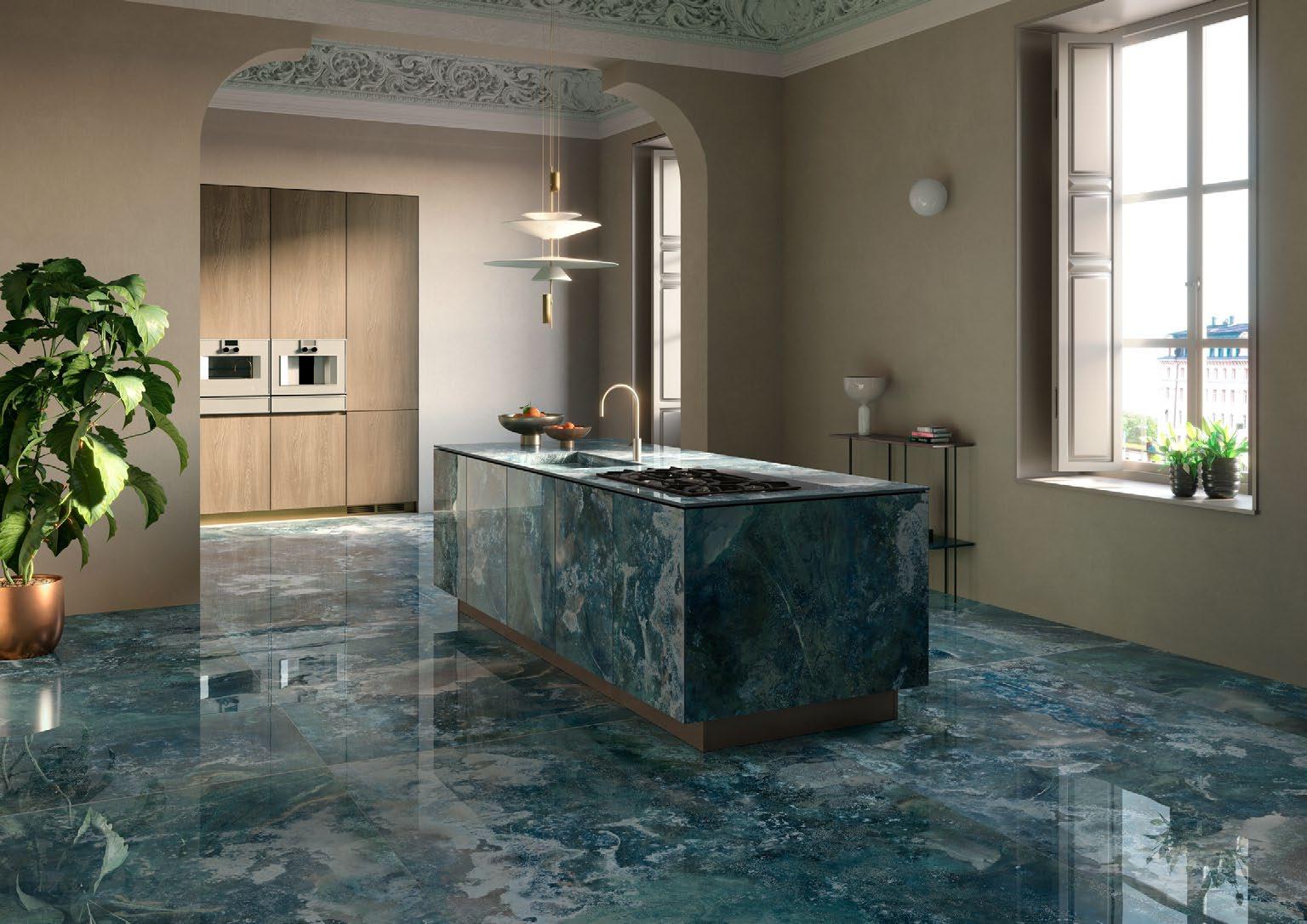
108
© Copyright 2023 by Vasta Stone




















































































































 BY LIAM ARAN BARNES
BY LIAM ARAN BARNES

























 BY LIAM ARAN BARNES
BY LIAM ARAN BARNES








 BY AL GERARD DE LA CRUZ
BY AL GERARD DE LA CRUZ






 BY GEORGE STYLLIS
BY GEORGE STYLLIS















 By Liam Aran Barnes
By Liam Aran Barnes

 By Steve Finch
By Steve Finch




































































































































































































































































